How design defined Audi: the brand celebrates 60 years with a collection of its greatest hits
A fleet of iconic Audis, the flowing lines of Frank Gehry’s architecture and the open roads of Northern Spain made for a design-rich experience
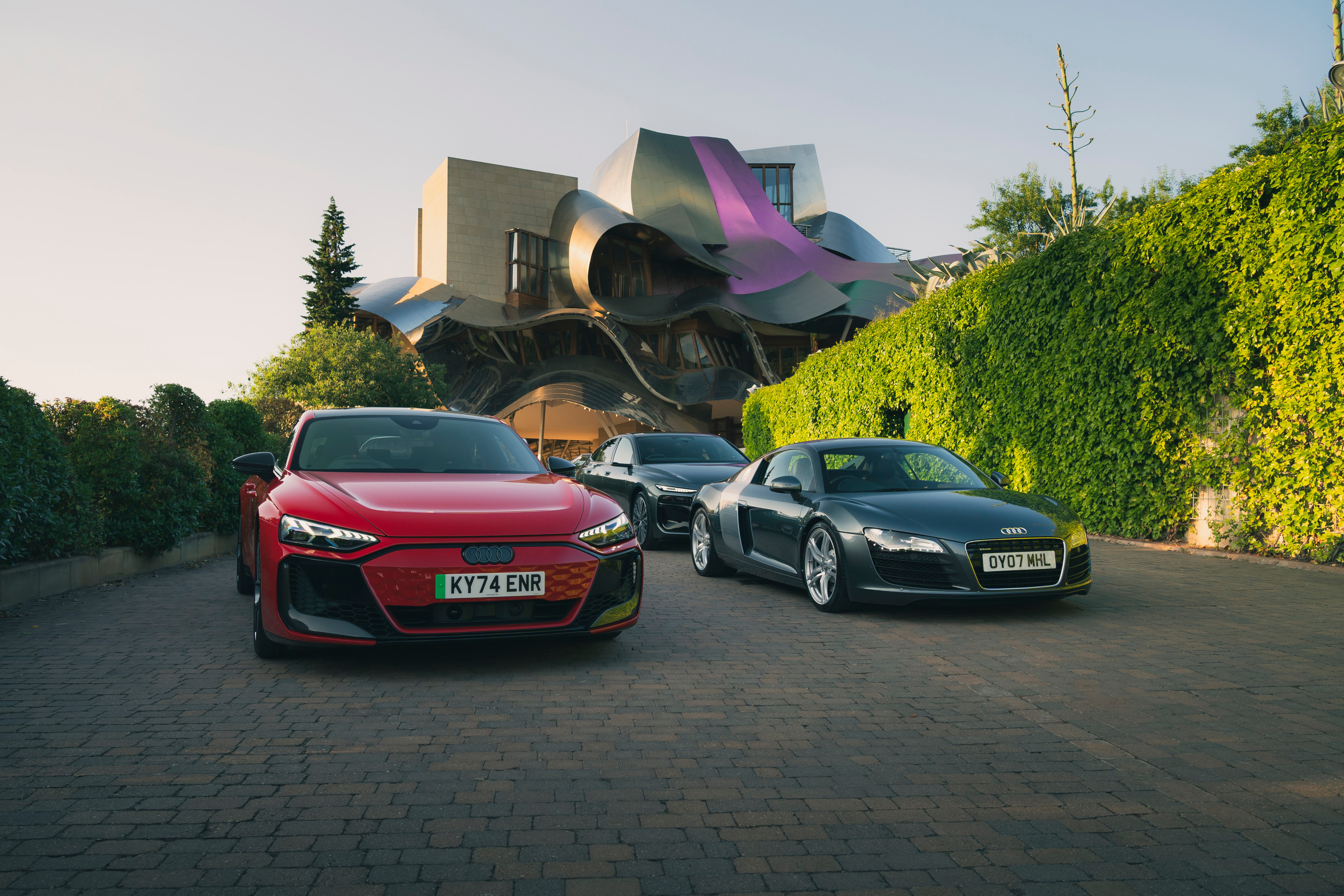
Is it time for another Audi design renaissance? In recent years, the Ingolstadt-based German manufacturer has seen its design mojo wither, spread too thinly across a vast range of products. Like many of its peers, Audi has suffered from its EV strategy, starting out with a distinct and separate line-up of e-tron EVs, but now folding them back into its regular model strategy.
On top of that, plans to change long-standing model names proved contentious and confusing and the brand has suffered from the absence of a true, distinct halo car, following the end of Audi R8 production in 2024.
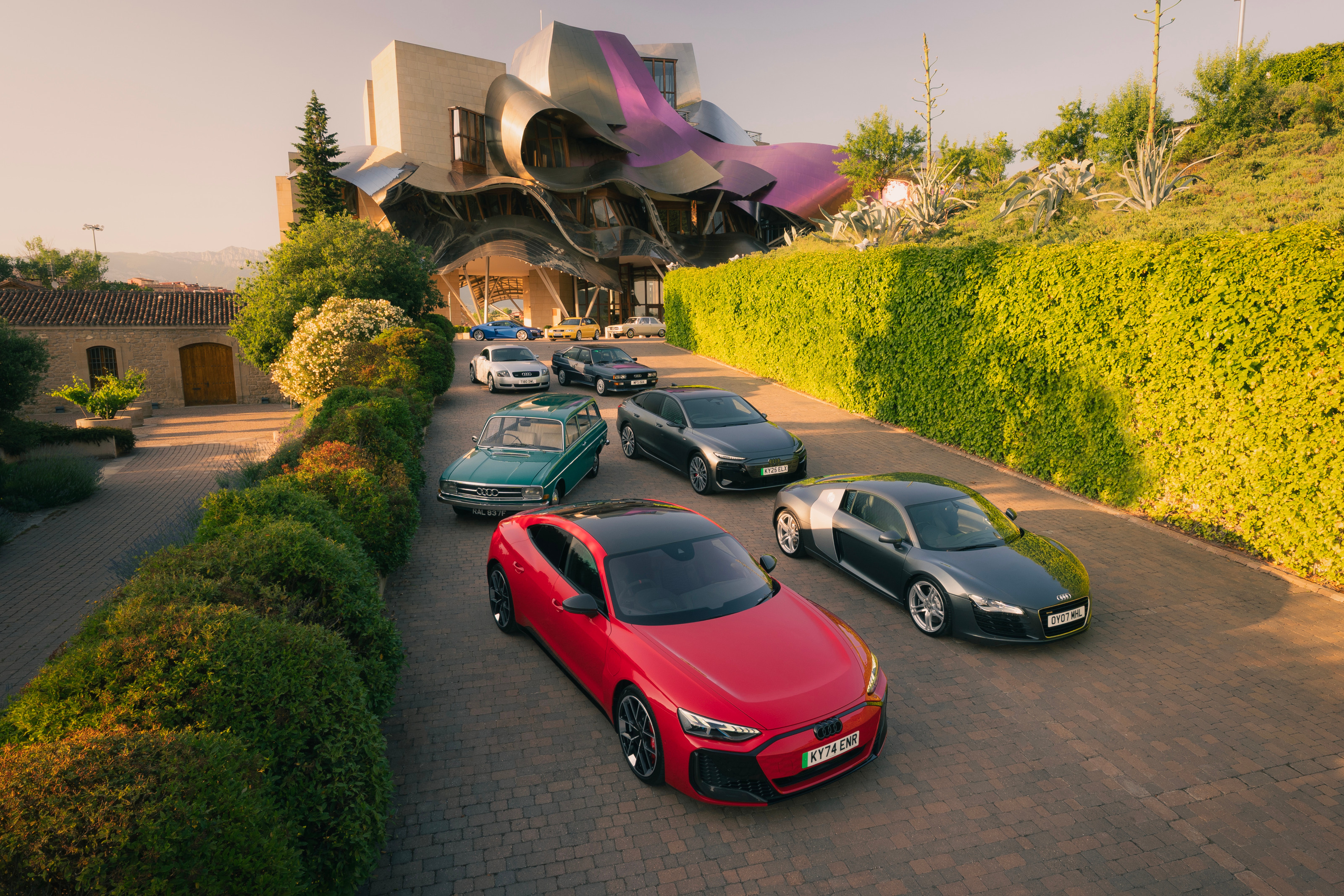
The Audi RS e-tron GT leads the pack ahead of 60 years of Audi design
With all this in mind, Audi’s decision to look forwards by looking back by assembling a cavalcade of greatest hits seems understandable. Wallpaper* travelled to Spain, in the refined surroundings of the Marqués de Riscal Hotel, to sample a delectable line-up of Audis old and new, with a side order of performance and a main dish of design.
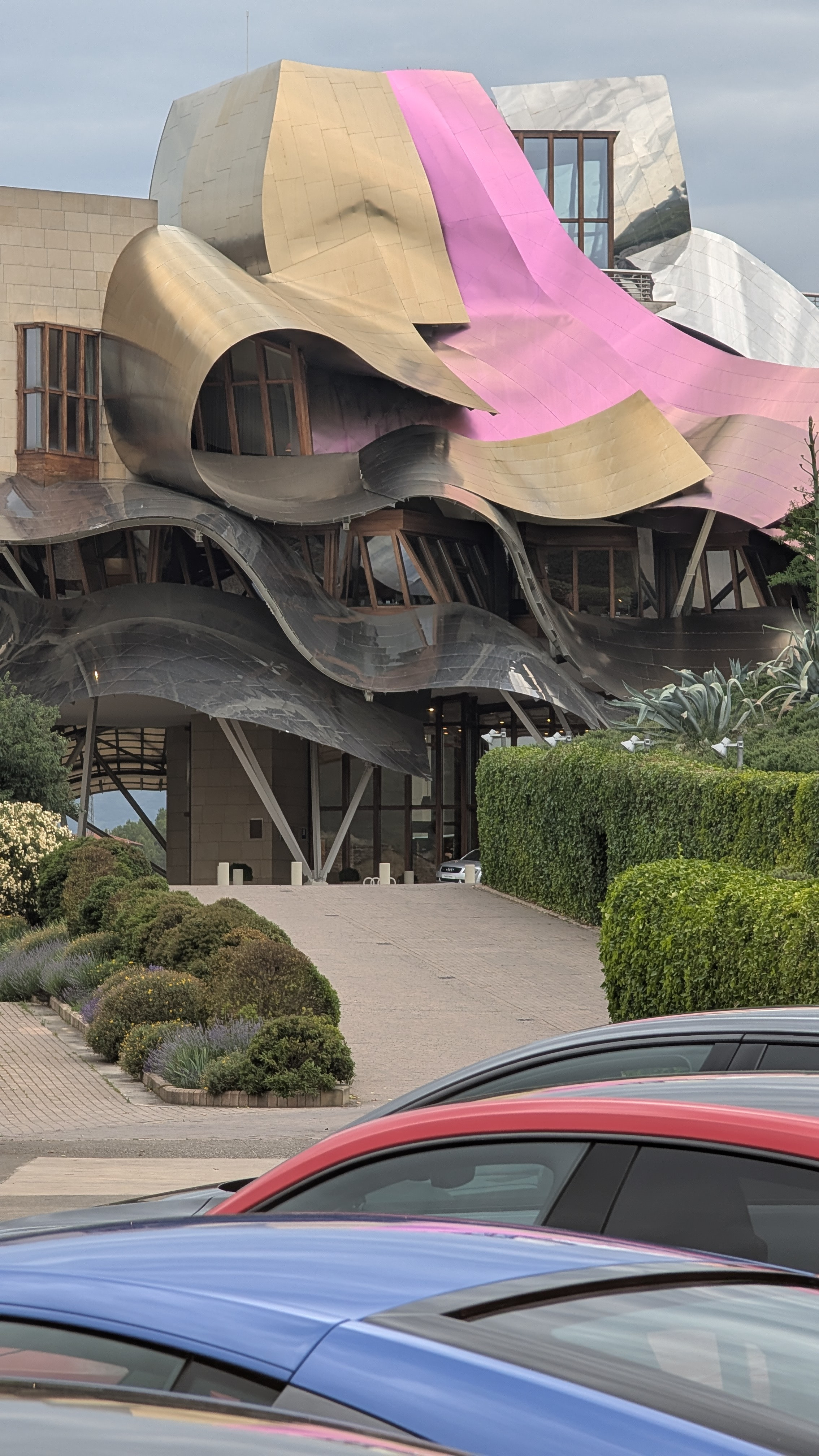
The event took place at Frank Gehry's Marqués de Riscal Hotel in Elciego, Spain
Audi takes the 1965 Auto Union F103 as the brand’s modern starting point, courtesy of the VW Group’s acquisition of the Auto Union brand and factory in 1964. That original car is represented here by a mint condition Audi 80 Variant from 1968, lined up alongside the Audi 100 GL Saloon from 1972 and joined by a greatest hits compilation.
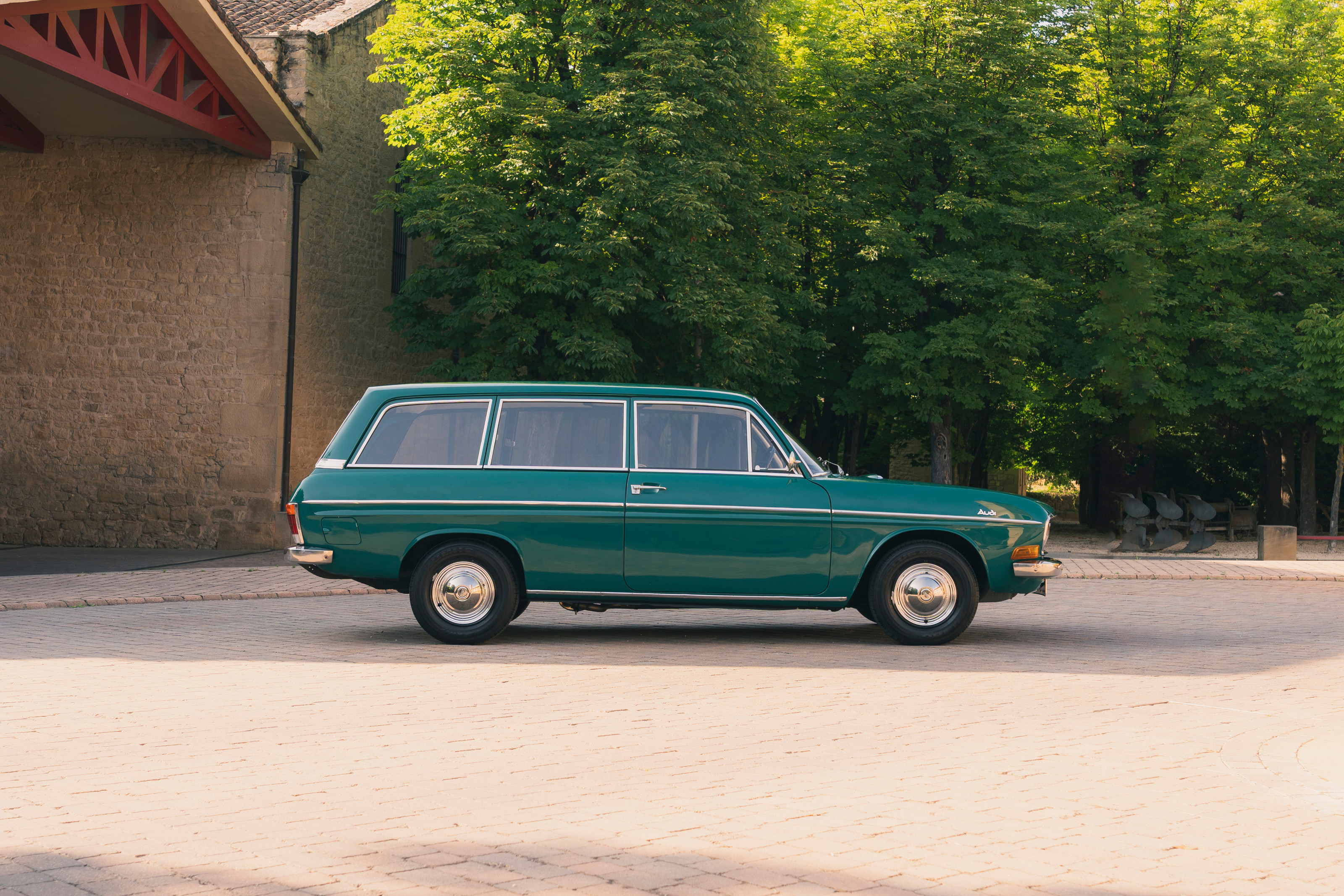
Audi 80 Variant, 1968
Cars on hand included the iconic original Audi quattro (1981), the seminal series 1 Audi TT Coupé, and four performance icons, the RS 2 Avant from 1994 (a collaboration with Porsche), the RS 4 Avant from 2001, and two R8s, an original manual V8 from 2007 and a V10-powered car from 2018. They were joined by two cars from the current fleet, the RS e-tron GT and brand new A6 Sportback e-tron (2025).
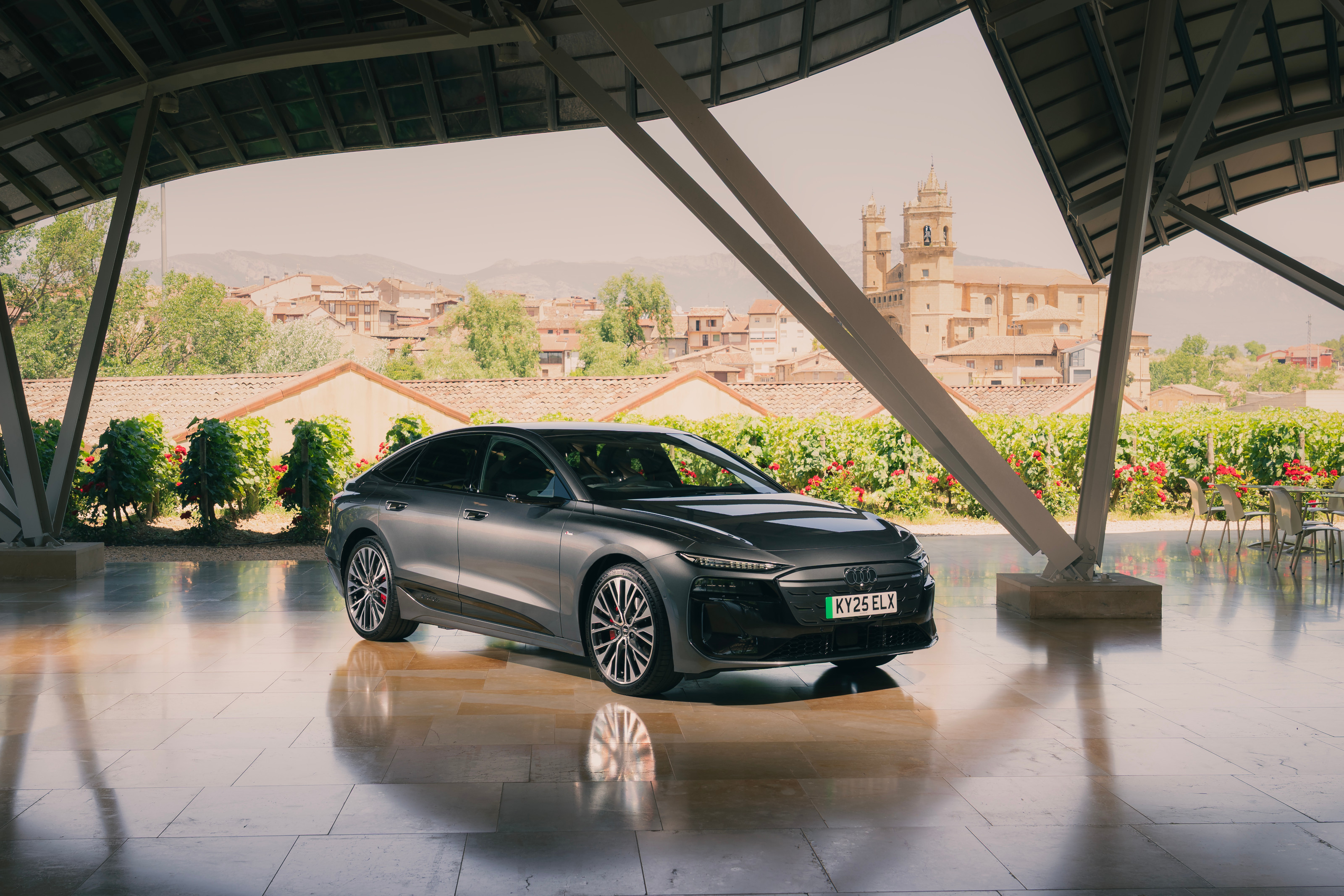
Audi A6 Sportback e-tron, 2025
This collection of classic and contemporary metal lined up beneath the fluttering roofscape of the Marqués de Riscal Hotel in Elciego, designed by Frank Gehry and opened in 2006. It created a highly Instagrammable backdrop for this hands-on tour of Audi design history. The one-off event was not only joined by Audi’s senior exterior designer Gary Telaak, here to talk us through the evolution of the marque, but also by Audi UK’s new managing director, José Miguel Aparicio.
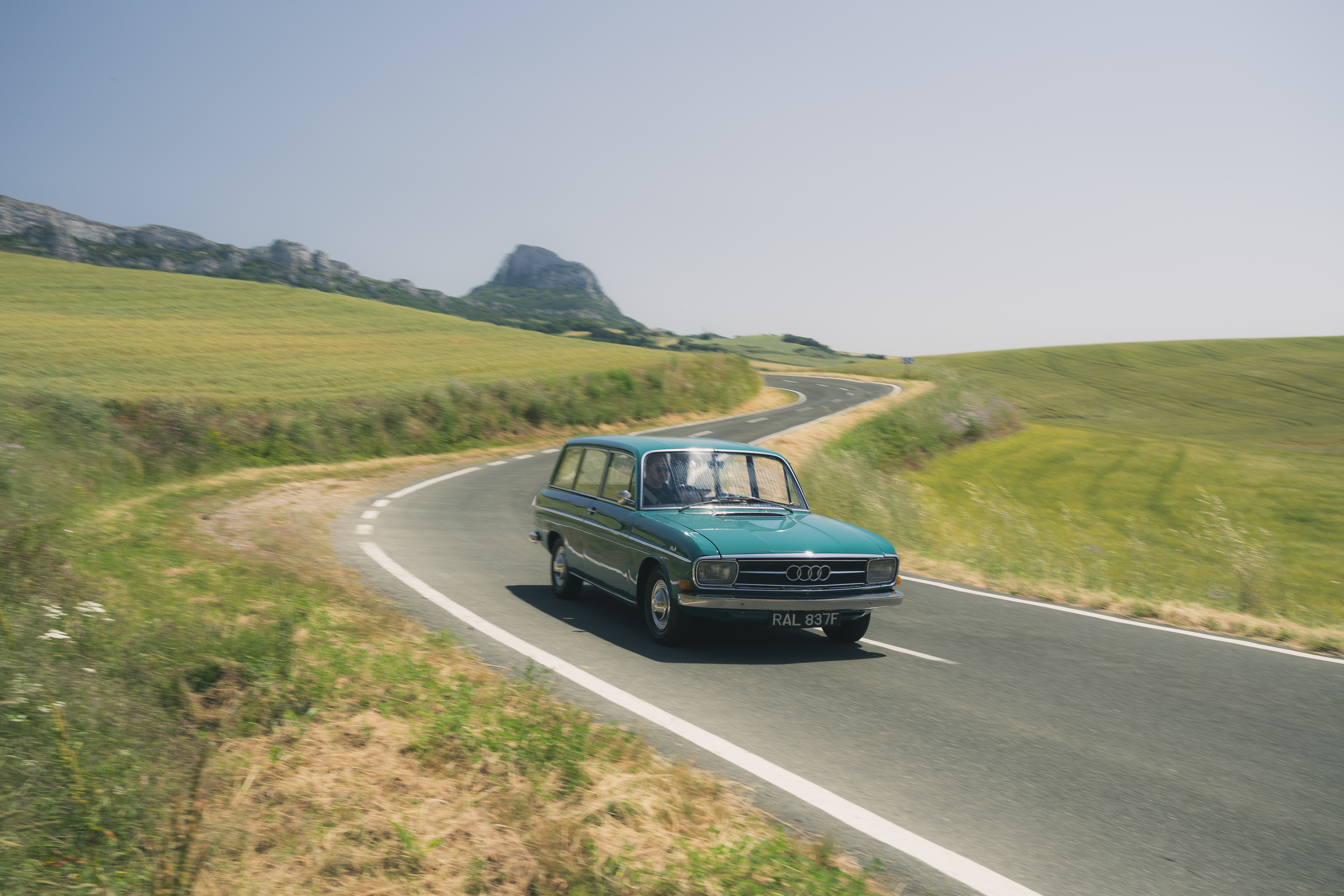
Audi 80 Variant, 1968
This was significant for a couple of reasons. For a start, the cars shown here all belong to Audi UK’s ‘heritage fleet’, a mint condition collection of lovingly maintained cars that makes the rounds at shows and events like this. 1965 is also the year when Audi started selling in the UK and the country’s embrace of the brand helped shape its identity around the world.
Receive our daily digest of inspiration, escapism and design stories from around the world direct to your inbox.
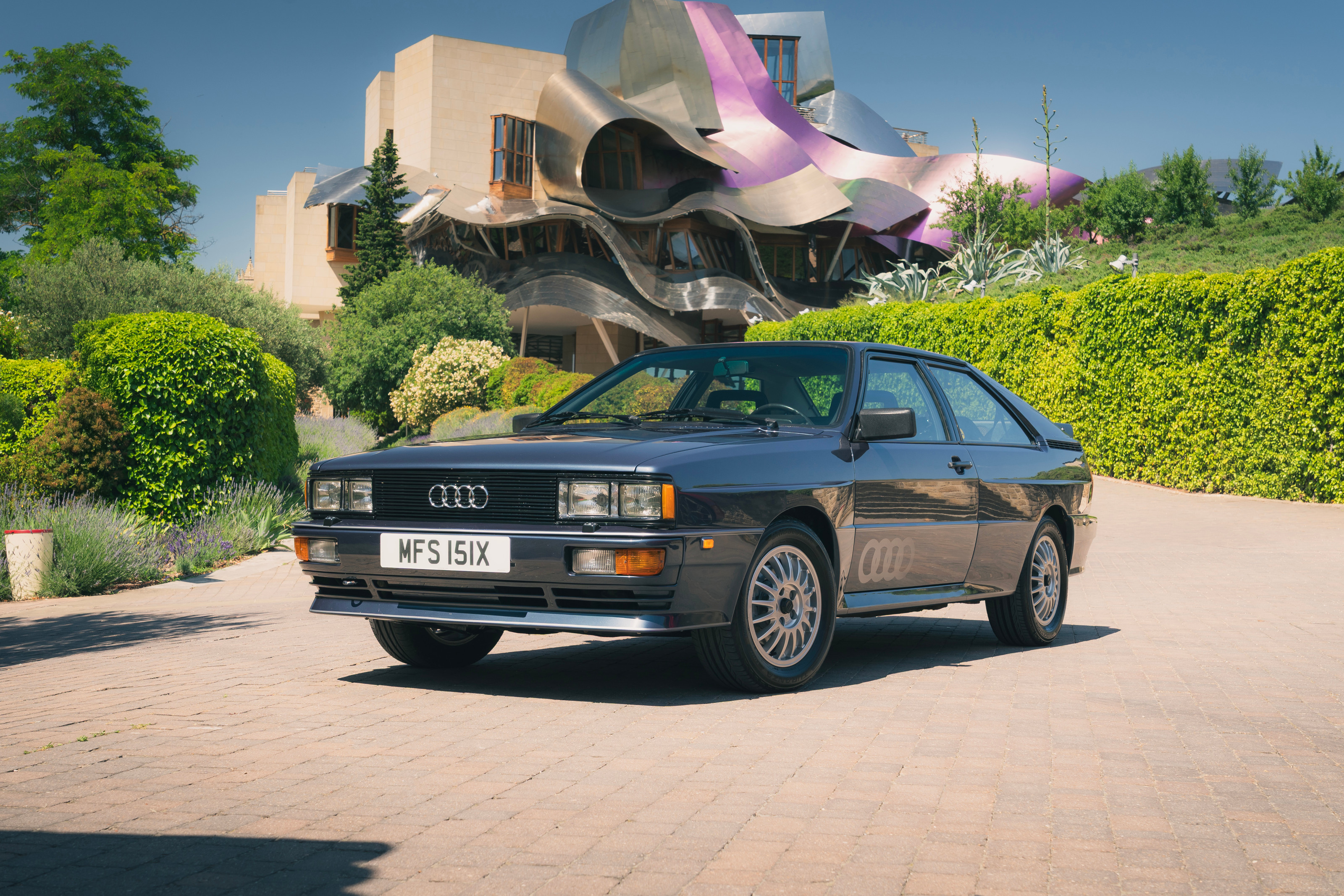
First generation Audi quattro 10V
It was the UK’s creative industry that came up with the wheeze of taking an old advertising line, ‘Vorsprung durch Technik’ ('progress through technology'), and tweaking it to symbolise the Platonic ideal of German engineering prowess. John Hegarty of Audi’s UK agency BBH cherry-picked VdT from a selection of early marketing material. In BBH’s skilled hands, it drove the brand into the premium space. The hard-edged Germanic precision of the words bounced off the famed British tin ear for language and sounded exotic, futuristic and trustworthy all at once.
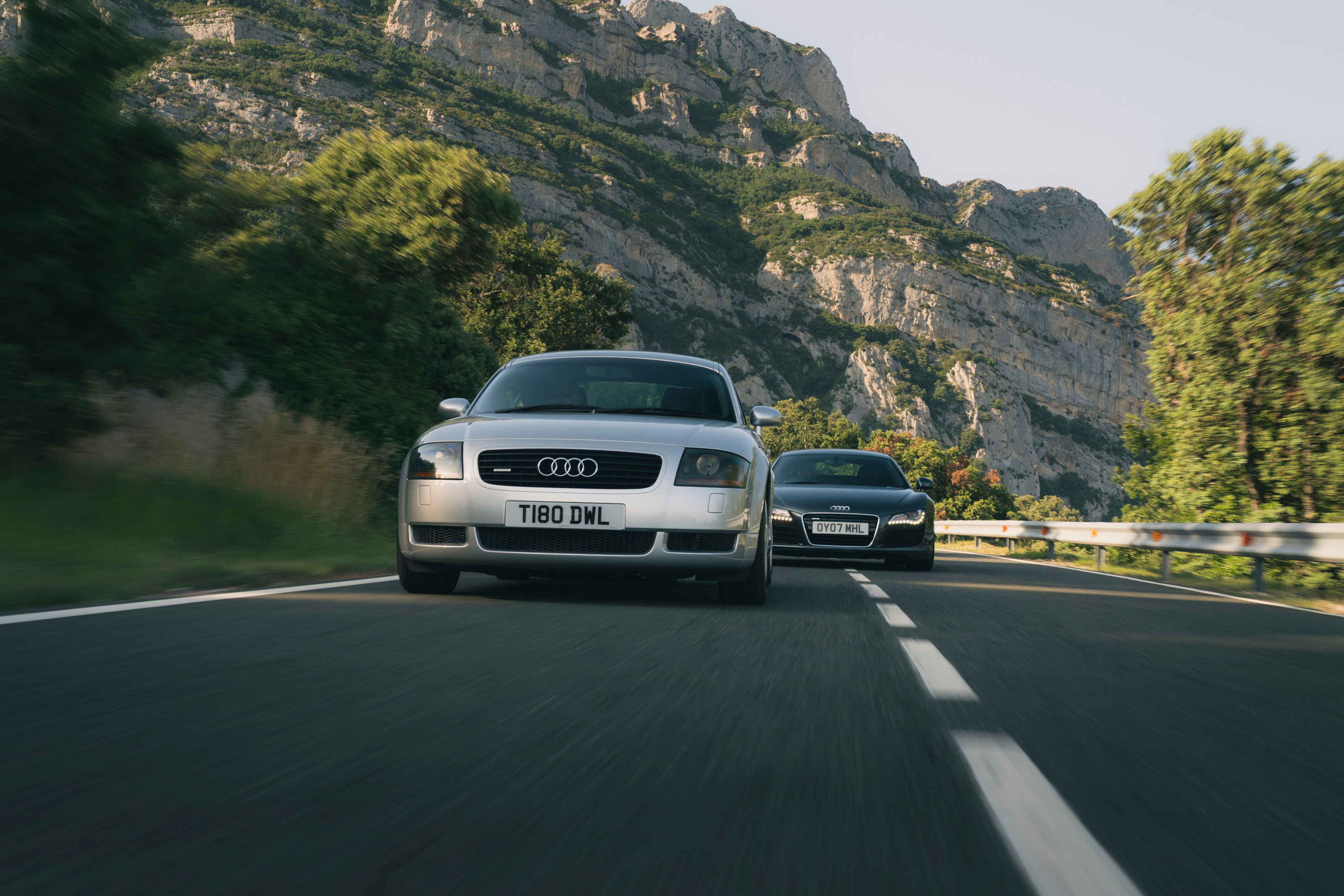
The Audi TT and Audi R8
Some ad agency bean counter calculated that Audi and VdT's brand equity is worth something in the region of £31.8bn (the VW Group's entire market capitalisation is around £40bn). The tagline became a cultural touchstone, repeated over 100 million times on ads throughout the 80s, 90s and beyond, seeping into everyday life via Only Fools and Horses and Blur's Parklife). The cars kept pace with the message and the 1980 debut of the Audi quattro, with its chunky styling and four-wheel-drive powertrain, gave the company its first true status symbol and helped define the decade’s innate style.
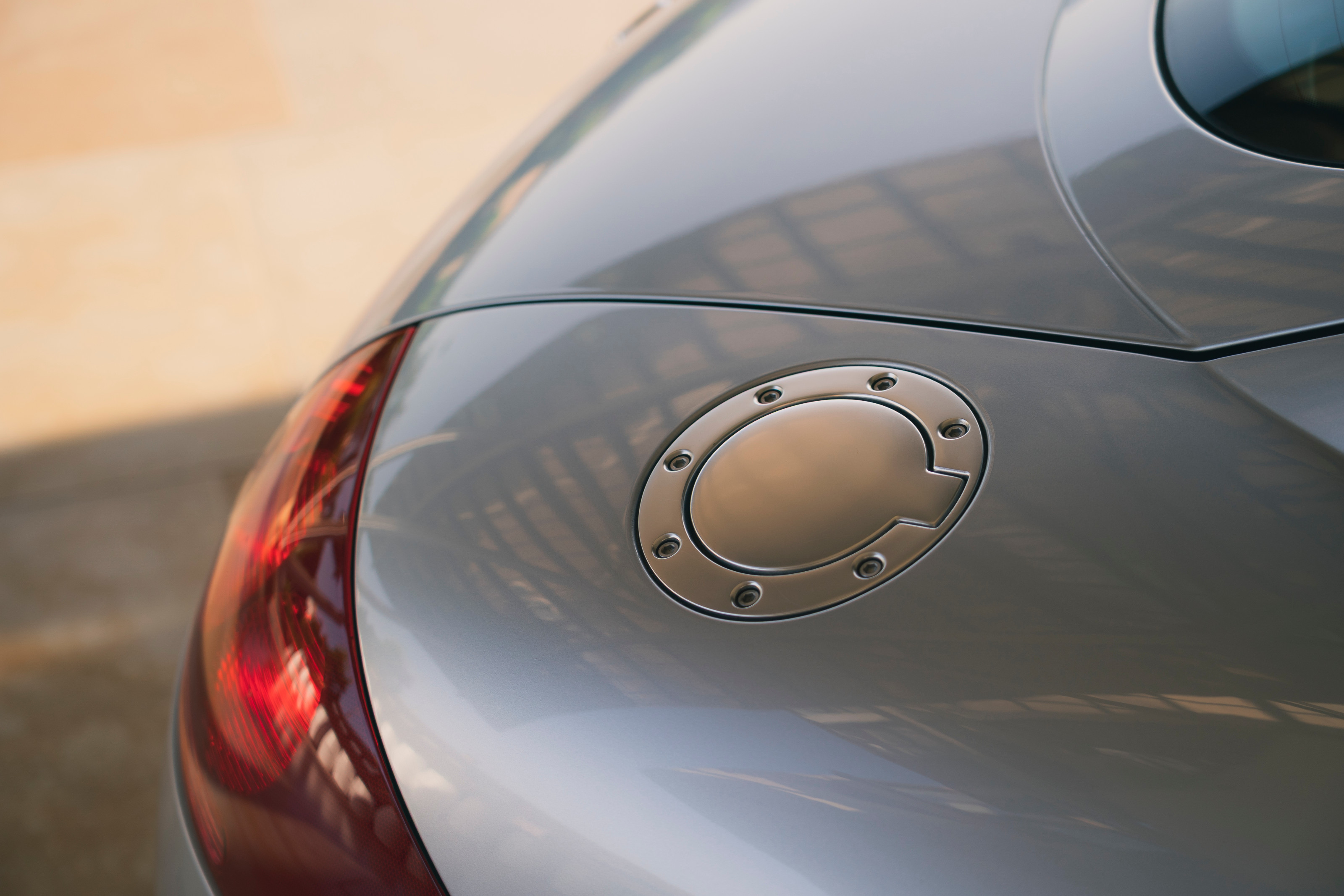
Detail of the original Audi TT
The arrival of the TT created another fortuitous alignment with German design culture. This time, the point of reference was the Bauhaus, which at that point in time was very much seen as a 20th century cultural niche. The connection was played up by the UK design establishment (and design press, we must admit), helping draw a direct lineage between the geometric, industrialised precision of interwar modernism and the beautifully simple lines of the 1995 TT concept and the 1998 production car.
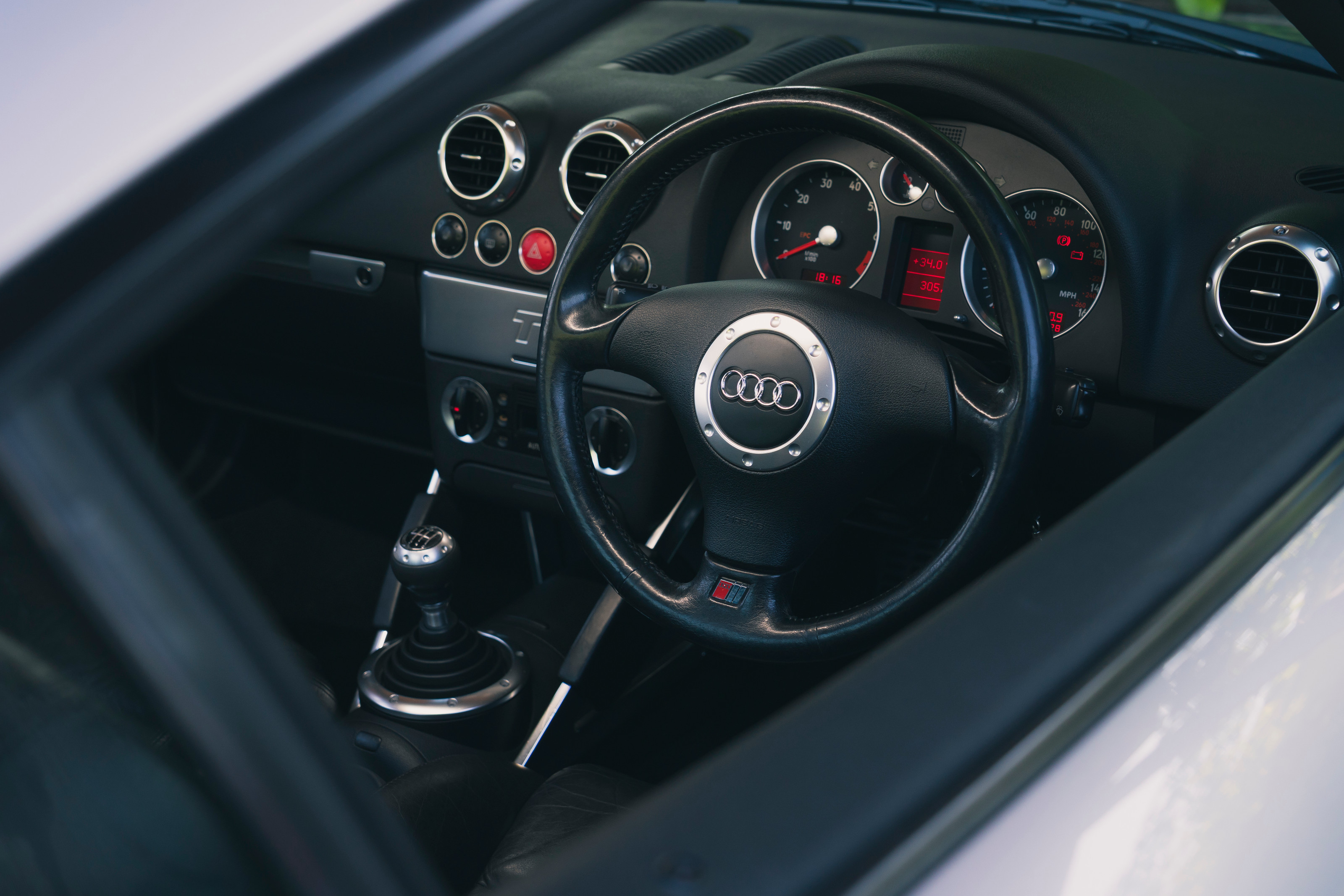
The dashboard of the original Audi TT
In retrospect, this was a bit of a stretch, especially as the cars of the era that hewed closest to industrial minimalism were the Auto Union race cars of the 30s, vast machines that owed little to the esoteric politics of a small design school in Dessau and more to do with the grandiose national ambitions of the German state.
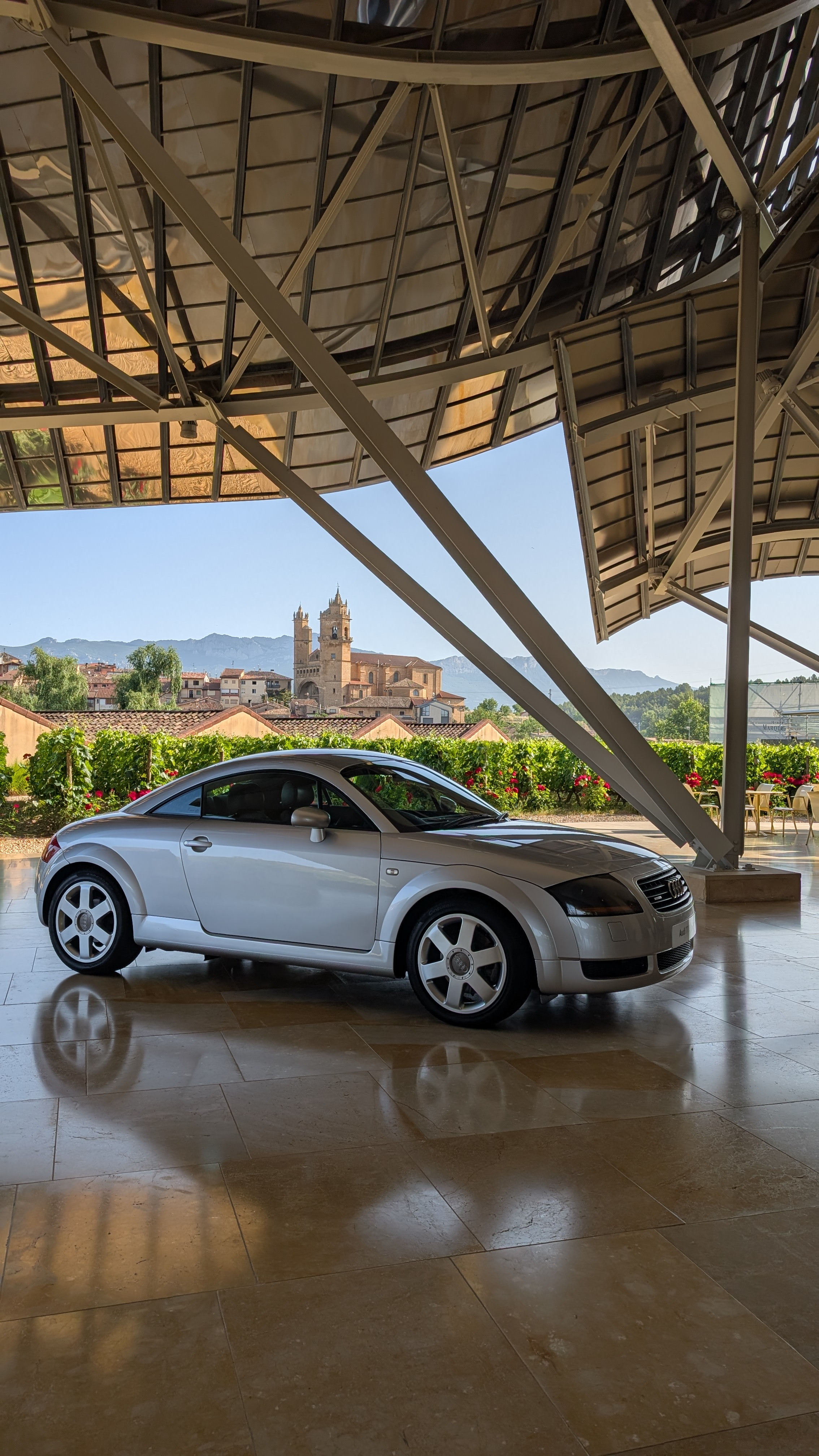
Audi TT
Nevertheless, these associations between technical sophistication and modernist thinking stuck. Audi could do no wrong. Throw in an industry-leading preoccupation with aerodynamics, and then a run of best-in-class automotive interiors, and Audi rocketed to a premium market slot, bolstered by the introduction of SUVs (the ‘Q’ models) and performance variants (‘RS’ models). However, the recent run of lacklustre early e-tron EVs and mixed messaging over model names, put an end to the company’s unbroken streak.
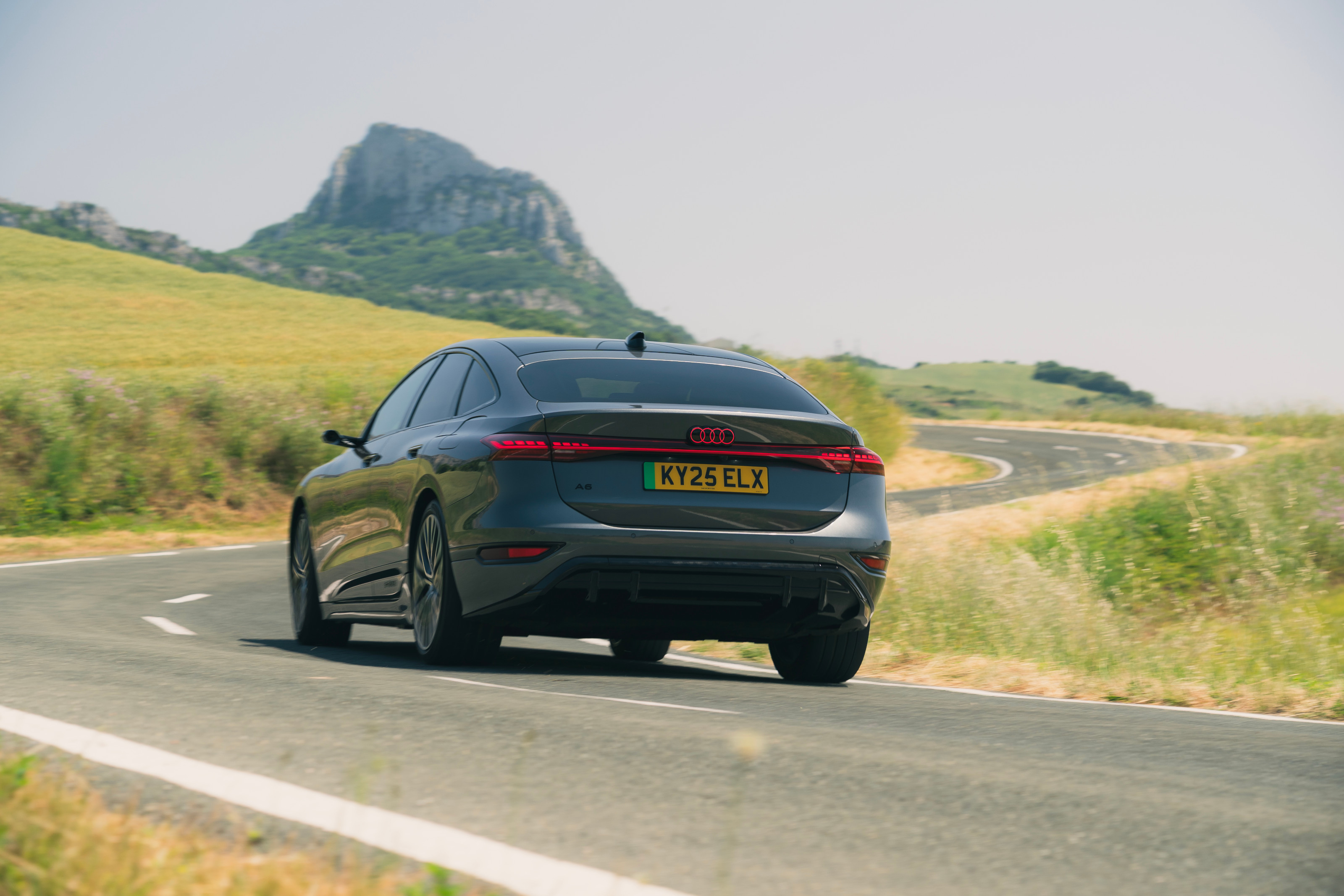
Audi A6 Sportback e-tron
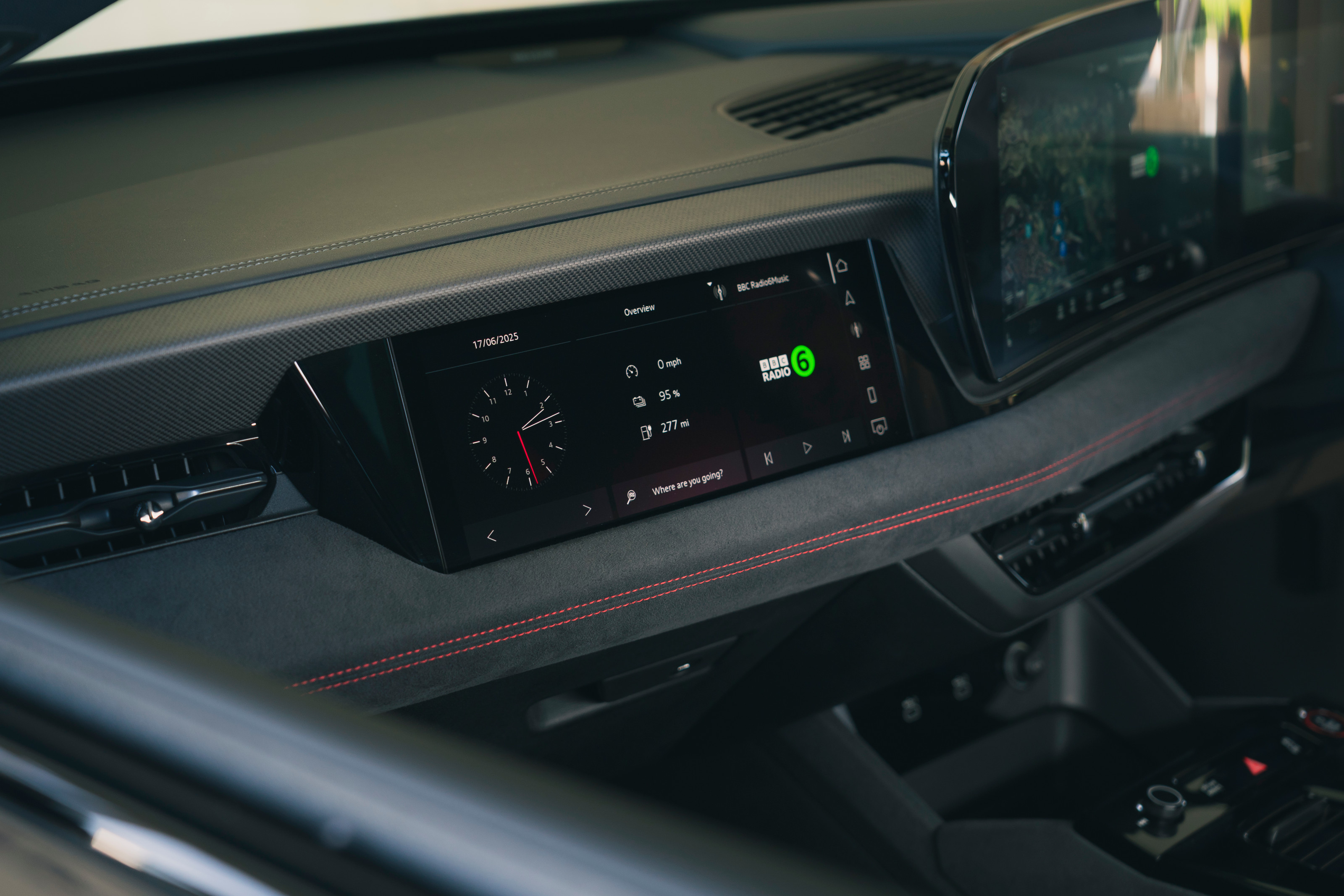
Audi A6 Sportback e-tron dashboard, 2025
On show in Spain – and driven by Wallpaper* - is the new A6 Sportback e-tron. Efficient, if a little airless, the new A6 is a throwback to the slippery Audi design language of the late 80s, when models like the C3 Audi 100 redefined style through aerodynamics. A lot of that slippery simplicity was diluted by increasingly aggressive design over the years that followed. This can be seen in the ‘regular’ Audi A6 (the C9 model), which shares a name but not a platform with A6 e-tron.
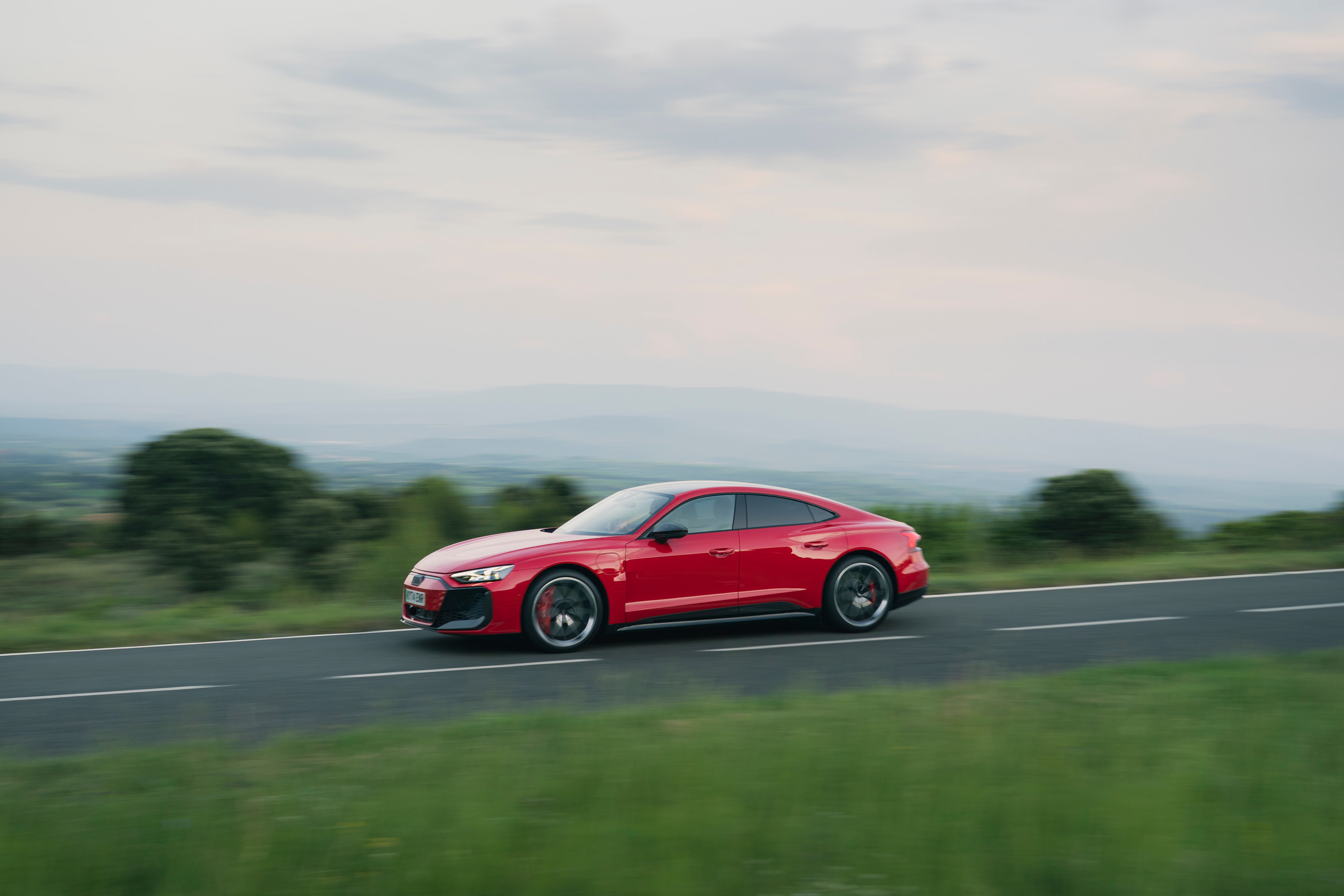
Audi RS e-tron GT
For a more muscular electric experience, I also sampled the RS e-tron GT, the performance flagship of Audi’s EV range. After having spent a few months with the standard e-tron GT, it felt like returning to an old friend, a fine mix of ergonomics, practicality and – in RS form – incredible pace. Perhaps the most successful electric Audi to date, the e-tron GT shares a platform with the Porsche Taycan but is very much its own beast. Low, wide and purposeful, it has a spiritual connection to Audi’s 80s tech-stuffed muscle car, the quattro.
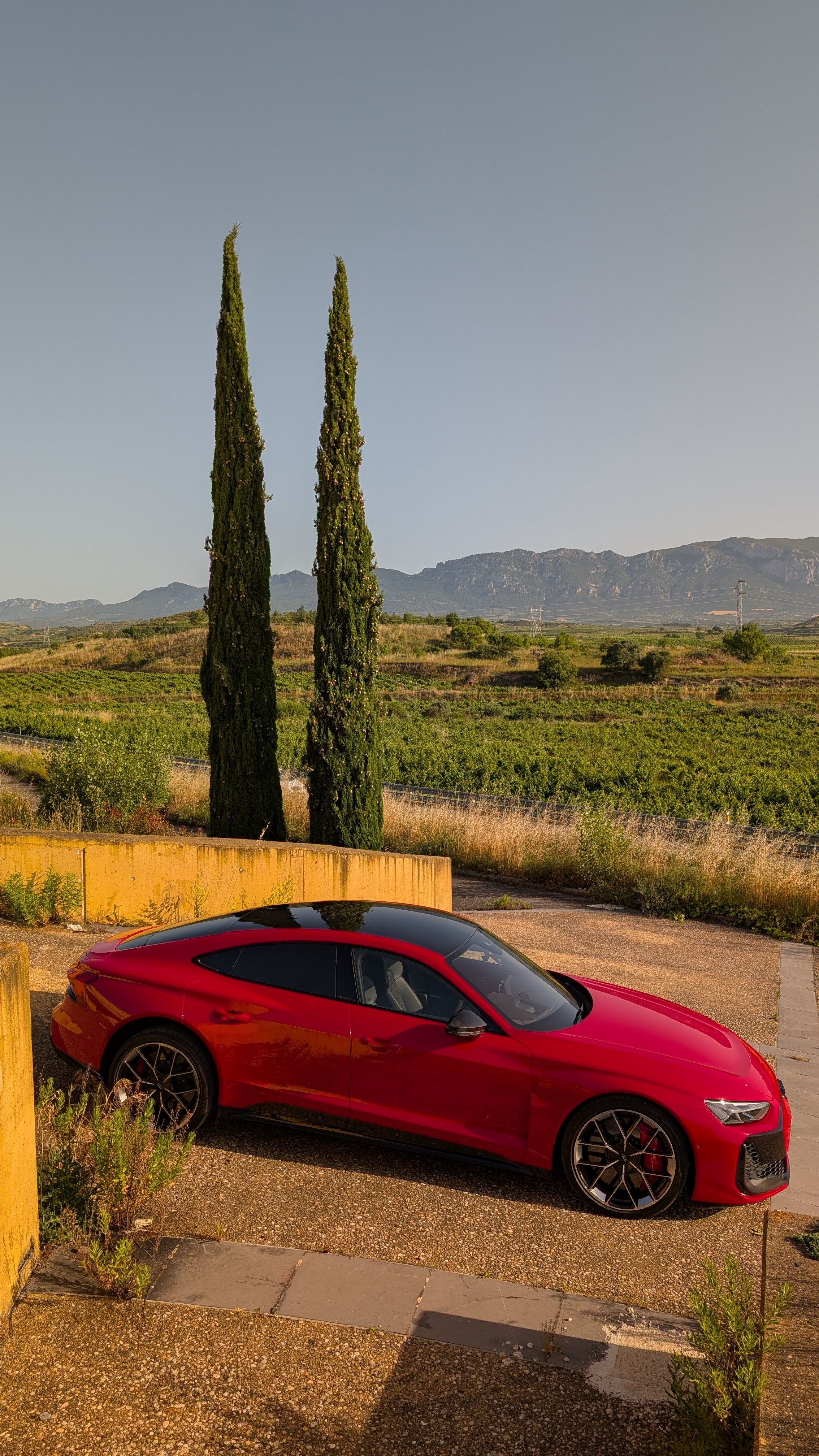
Audi RS e-tron GT, 2024
Before stepping through that particular time portal, I go back even further and sample the pristine examples of the Audi 80 and Audi 100 that are on offer. The 80 felt far adrift from modern dynamic sensibilities, with its vague column shift gearbox and steering. These aspects of the car had been substantially improved by the time the Audi 100 followed a few years later. Allegedly designed and developed in secret, after VW’s top brass declined to support the project, the C1-generation 100 became the company’s best-seller.
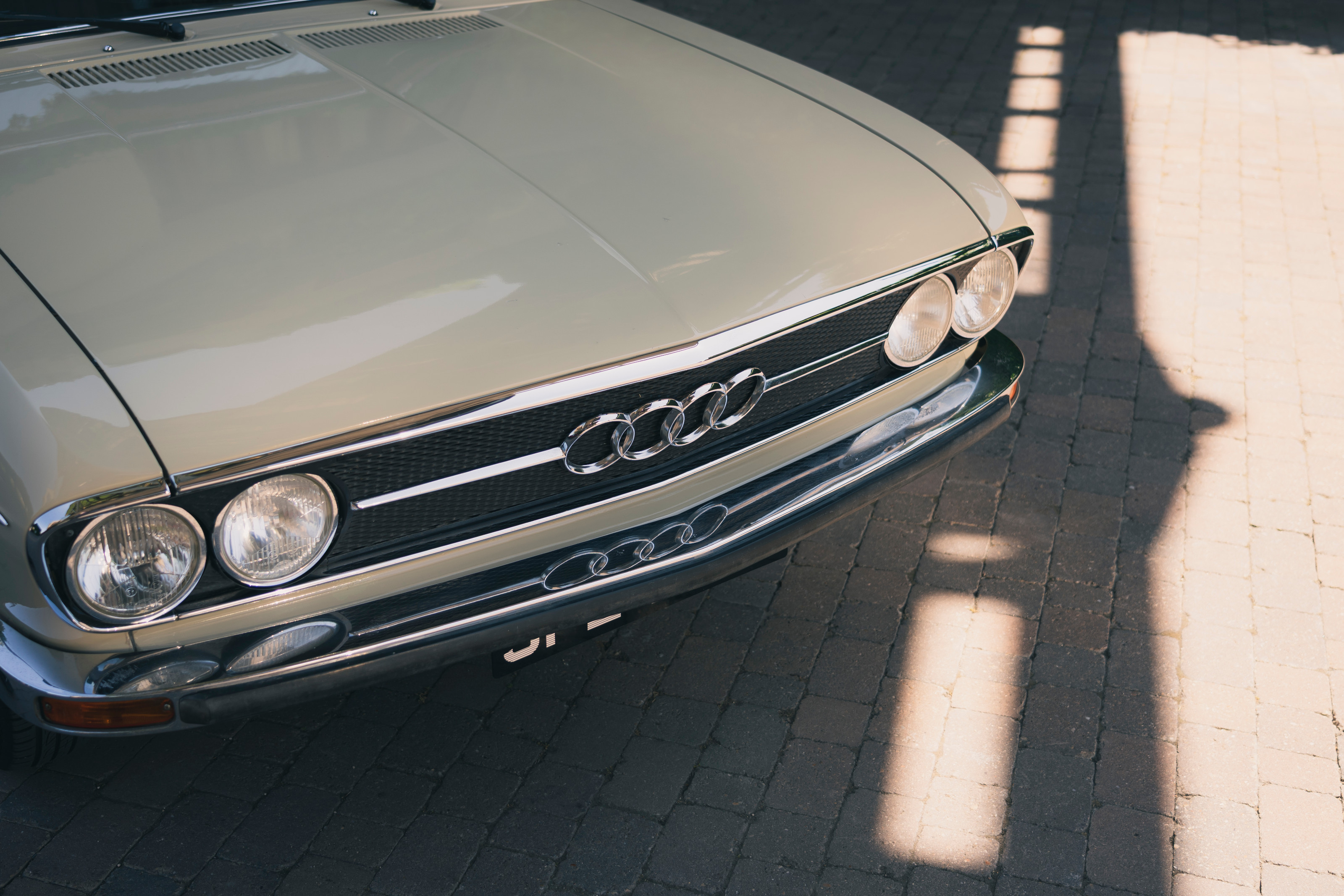
Audi 100 GL saloon
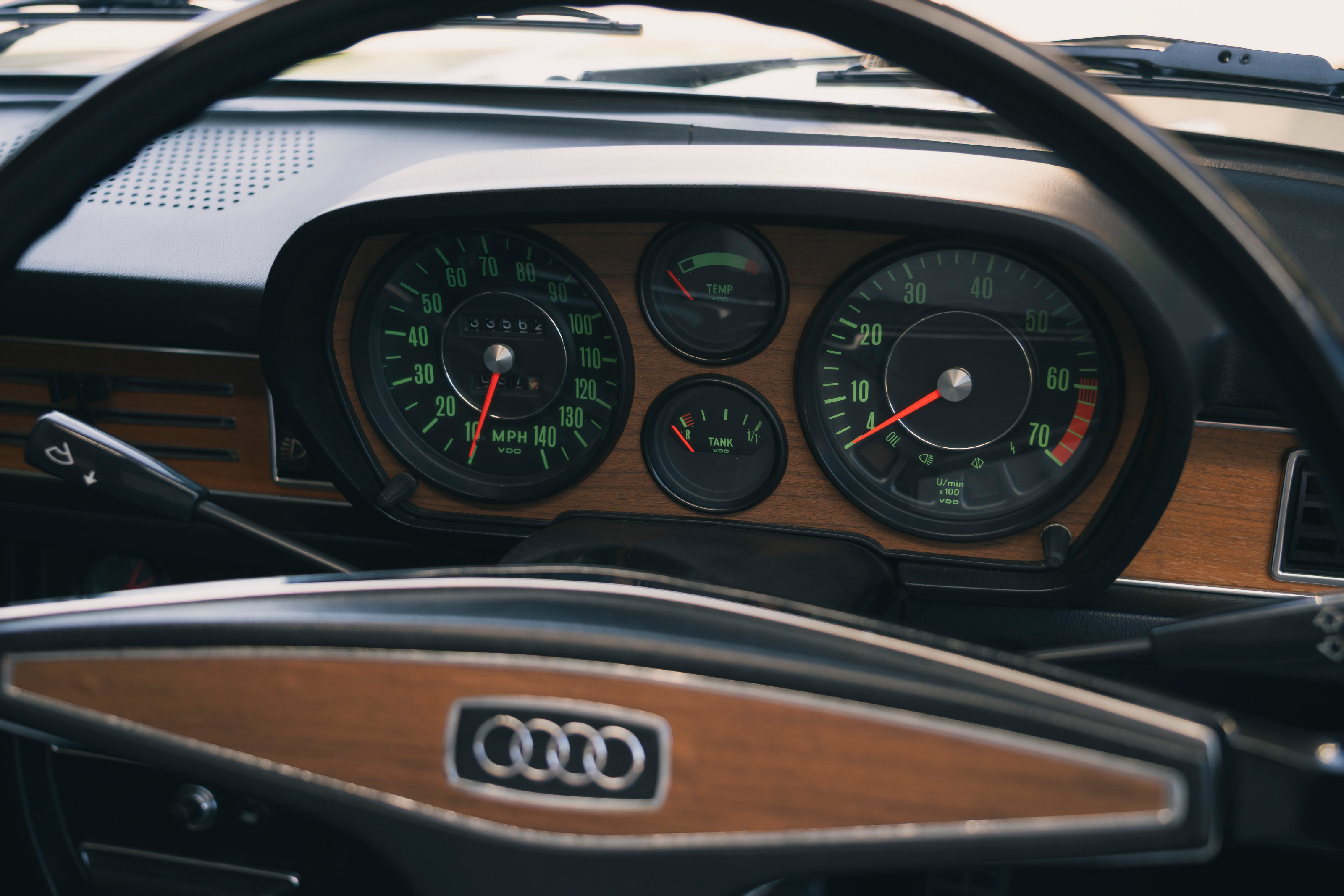
Audi 100 GL saloon dashboard
It is still a striking machine, especially in the rare two-door saloon version owned by Audi UK. There’s also an Audi 100 Coupé model (one of this writer’s favourite ever car designs). It’s a peach to drive as well, with the airy view and expansive interior afforded by slender columns and thin-walled structure. You wouldn’t want to have a run-in with a modern SUV whilst behind the wheel, but the more relaxed driving qualities of a classic make you take life at a slower pace.
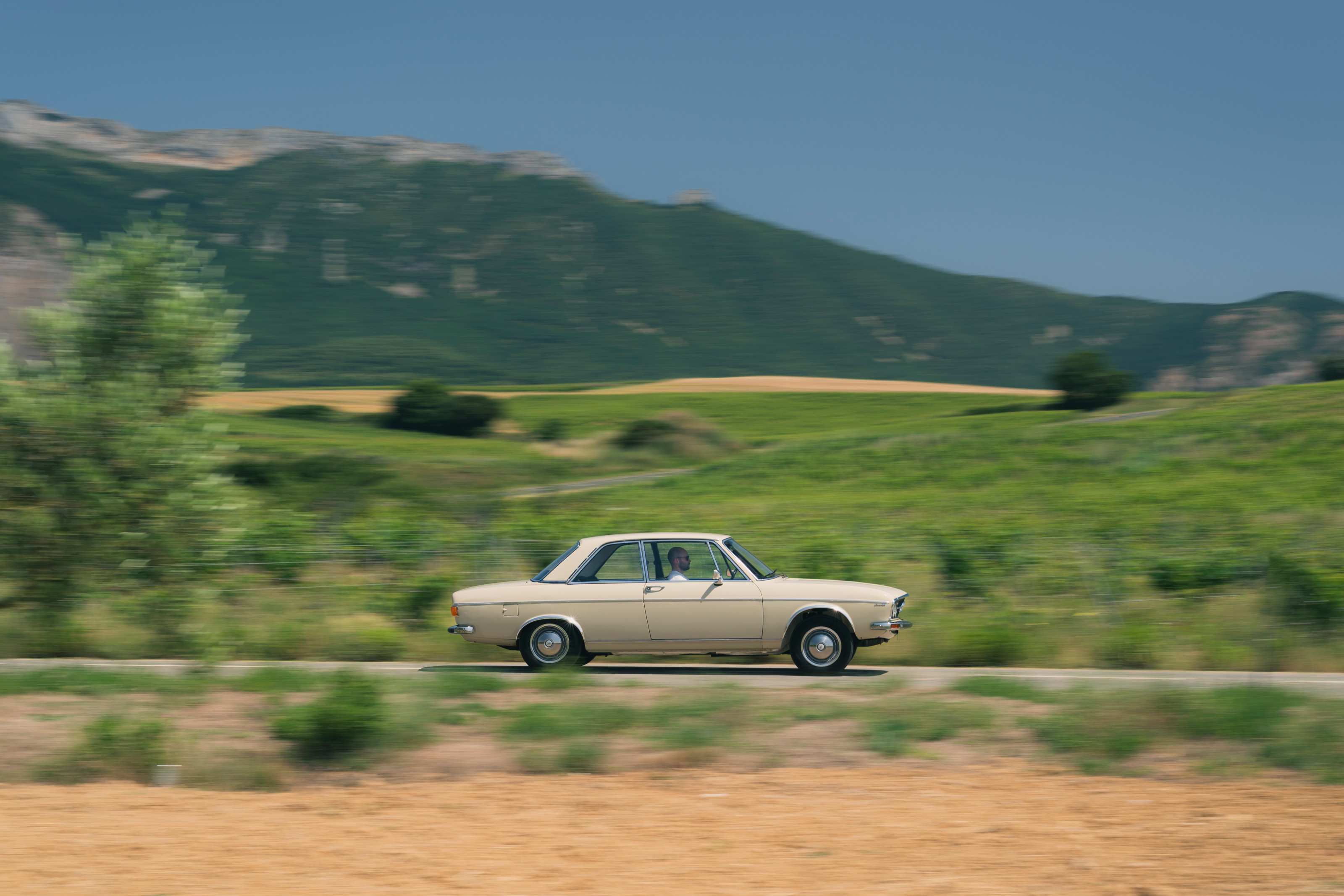
Slow and steady in the Audi 100 GL saloon
Not so with the Audi quattro, represented here by an early first series car with a crushed brown velour interior and boxy black plastic dashboard. The quattro was fast, sure-footed and delightful, the kind of 80s car that could happily co-exist in the modern world. It turns a Spanish back road into a rally stage and puts a smile of the face of everyone who drives it.
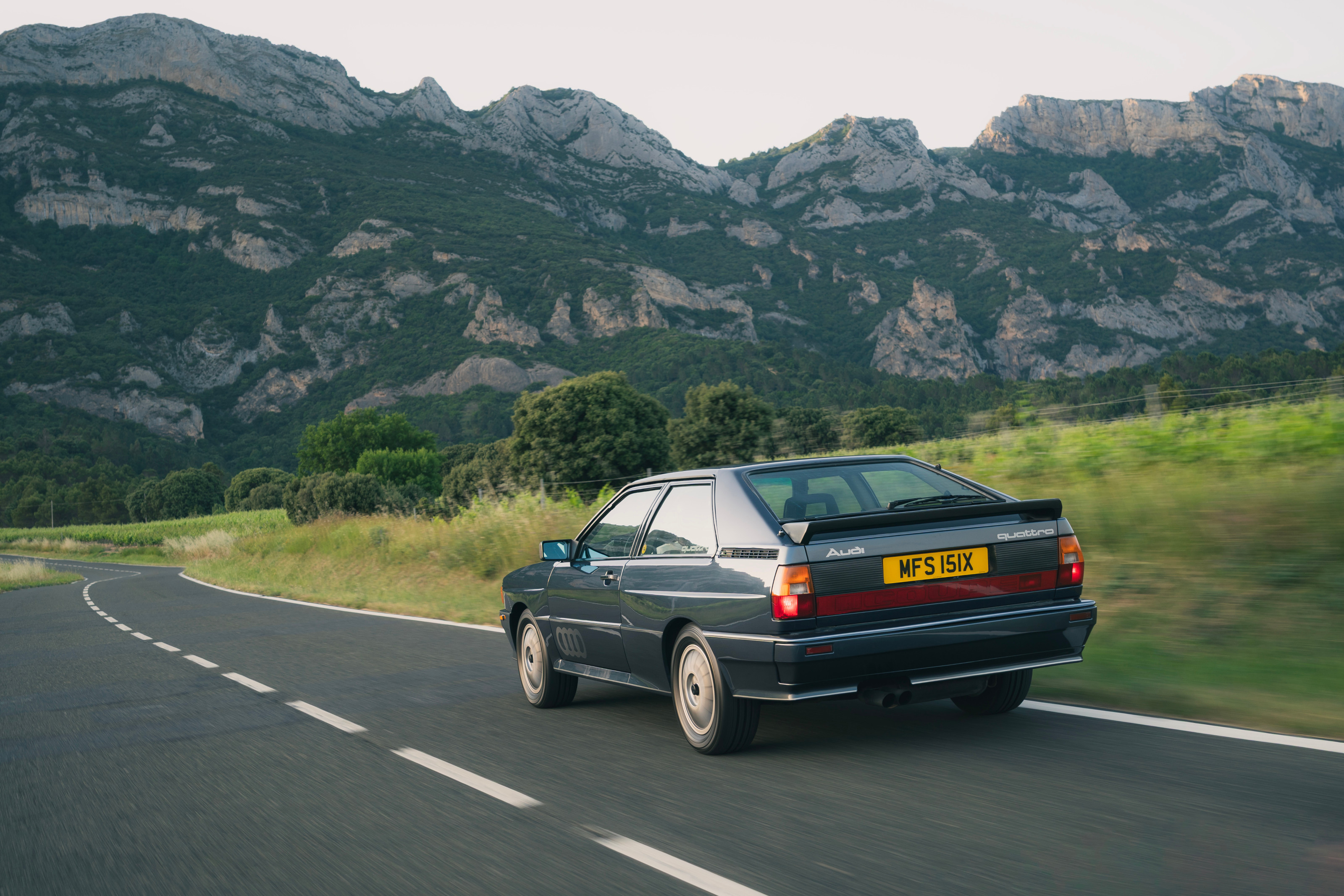
Audi Quattro 10V
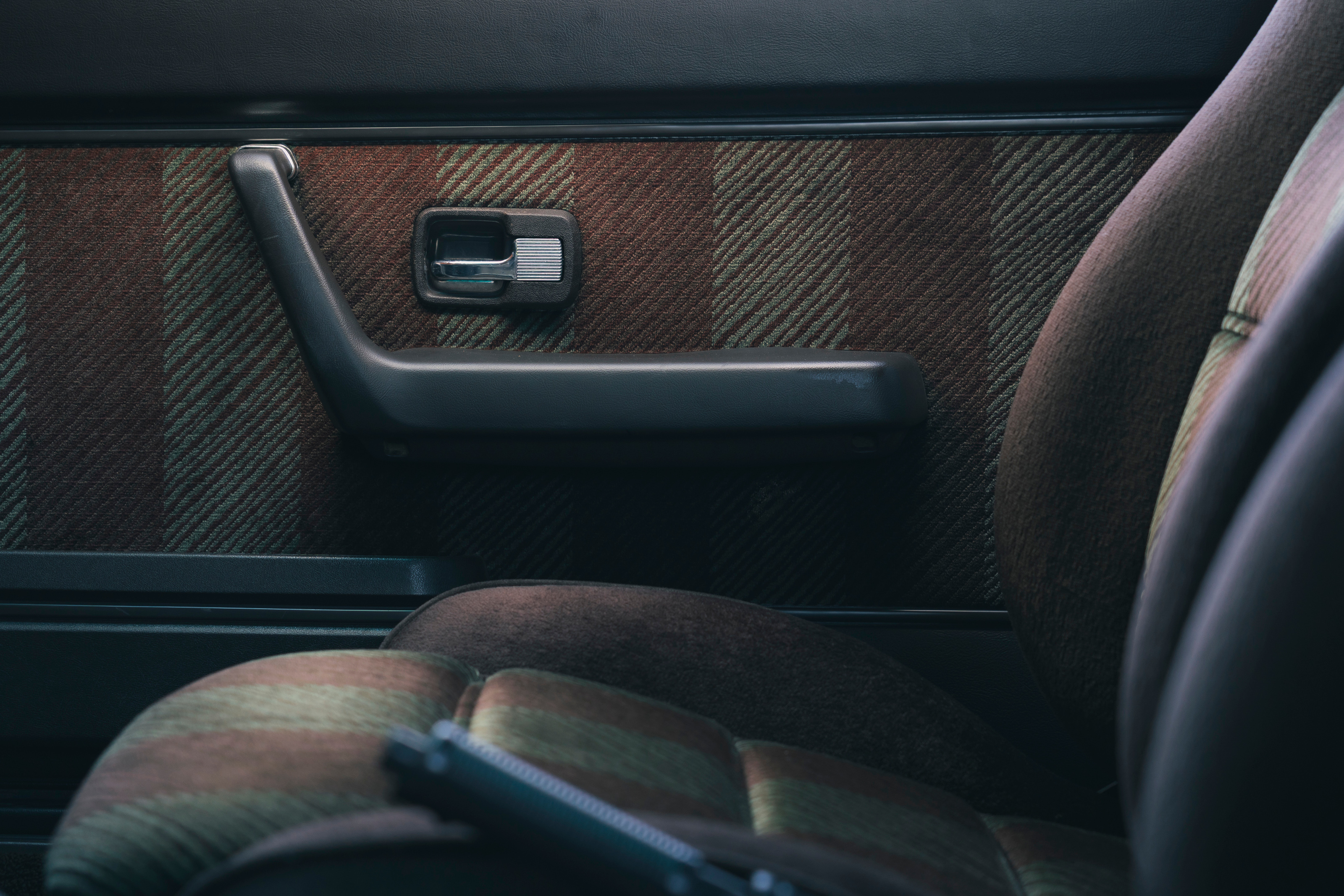
A quintessentially 80s interior in the Audi Quattro 10V
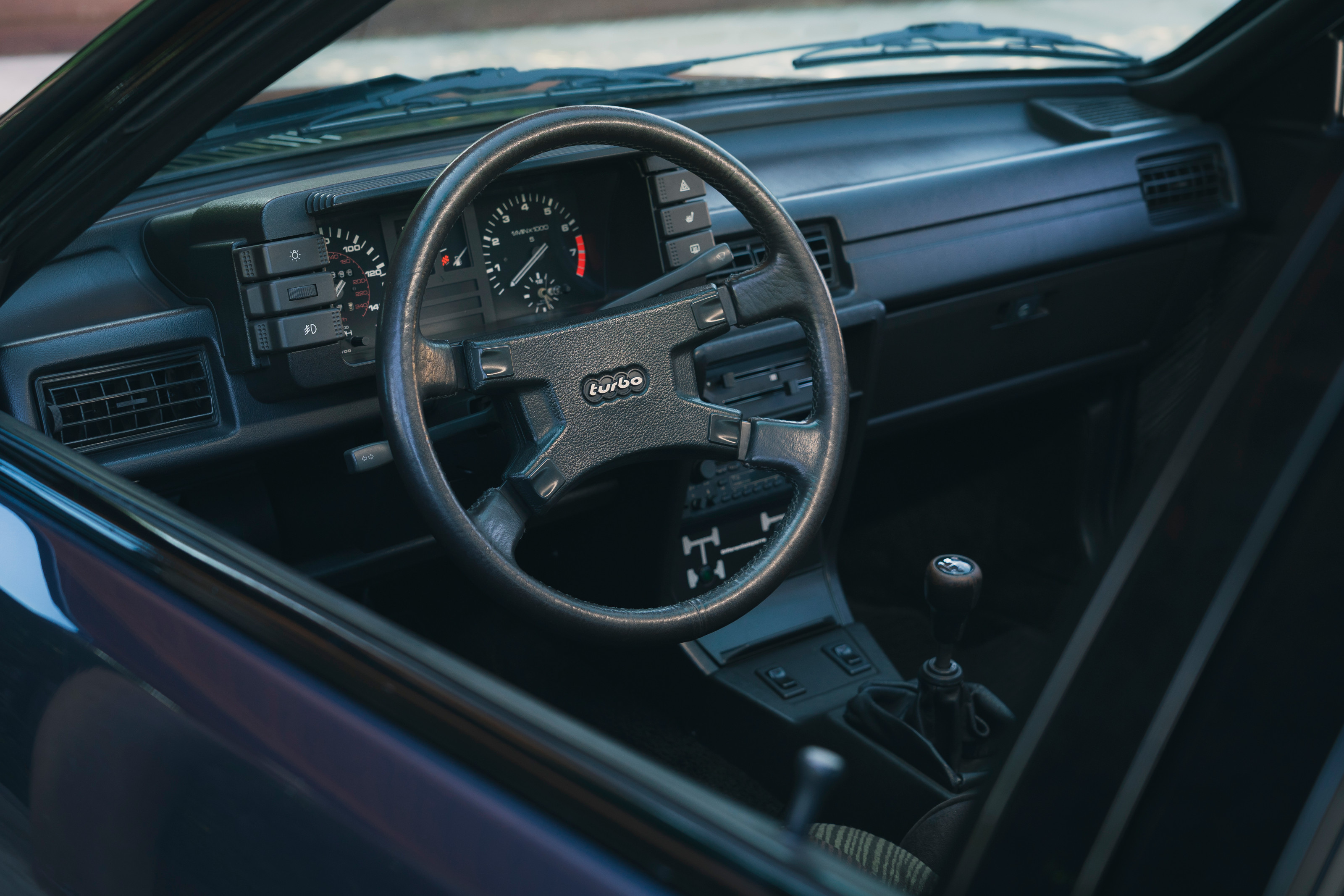
A quintessentially 80s interior in the Audi Quattro 10V
Both Audi RS 2 (B4) and RS 4 (B5) were brutal exercises in packaging performance in the quiet, relatively restrained form of an estate car. Each has become a cult classic, and it’s not hard to see why. They offer up pace and dynamic precision quite at odds with their exterior image, even with the subtly flared wheel arches and spoilers.
Oddly for a celebration of design, the line-up in Spain omitted that ground-breaking C3 Audi 100 (although it wasn’t exactly a dynamic stand-out), as well as the 1988 Audi V8, which led the brand towards the aluminium-bodied Audi A8 launched in 1994.
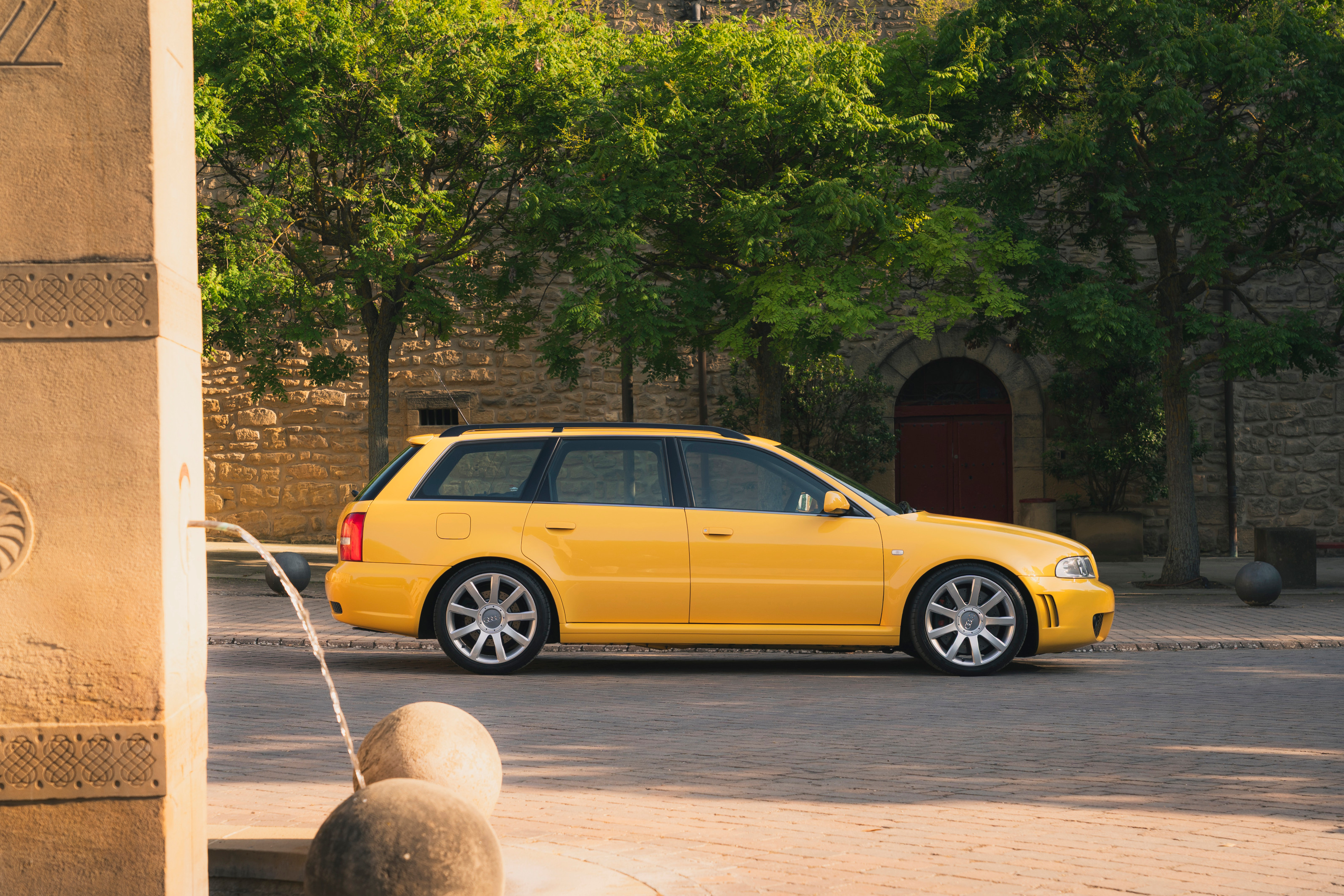
Audi RS4 Avant
That just left the Audi R8 to experience (the TT having been invalided out of the running due to the Spanish heat). The first-generation V8 was in great demand, so I consoled myself with revisiting the V10. It was like getting back into a favourite pair of shoes, a wonderful car that is already remembered fondly – everyone who drove it scuttled off to the internet to check used prices.
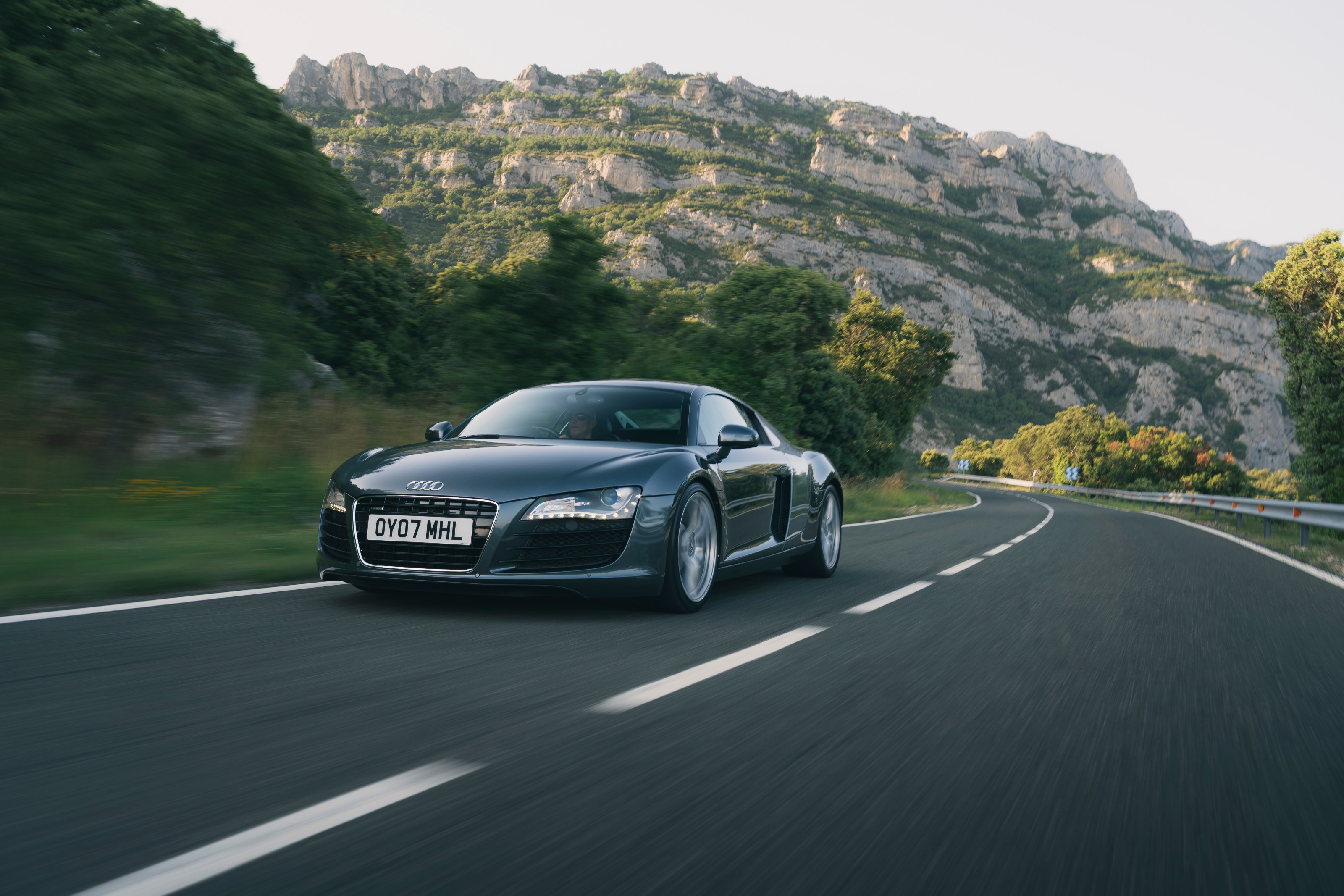
The original Audi R8 V8
The cab-forward, mid-engined design is timeless, even if the second-generation car lost the defining side-blade element that set the original apart. Inside, the R8 exists in a sweet spot where Audi’s design skills hadn’t been derailed by the cult of the digital dashboard – it’s ergonomically perfect.
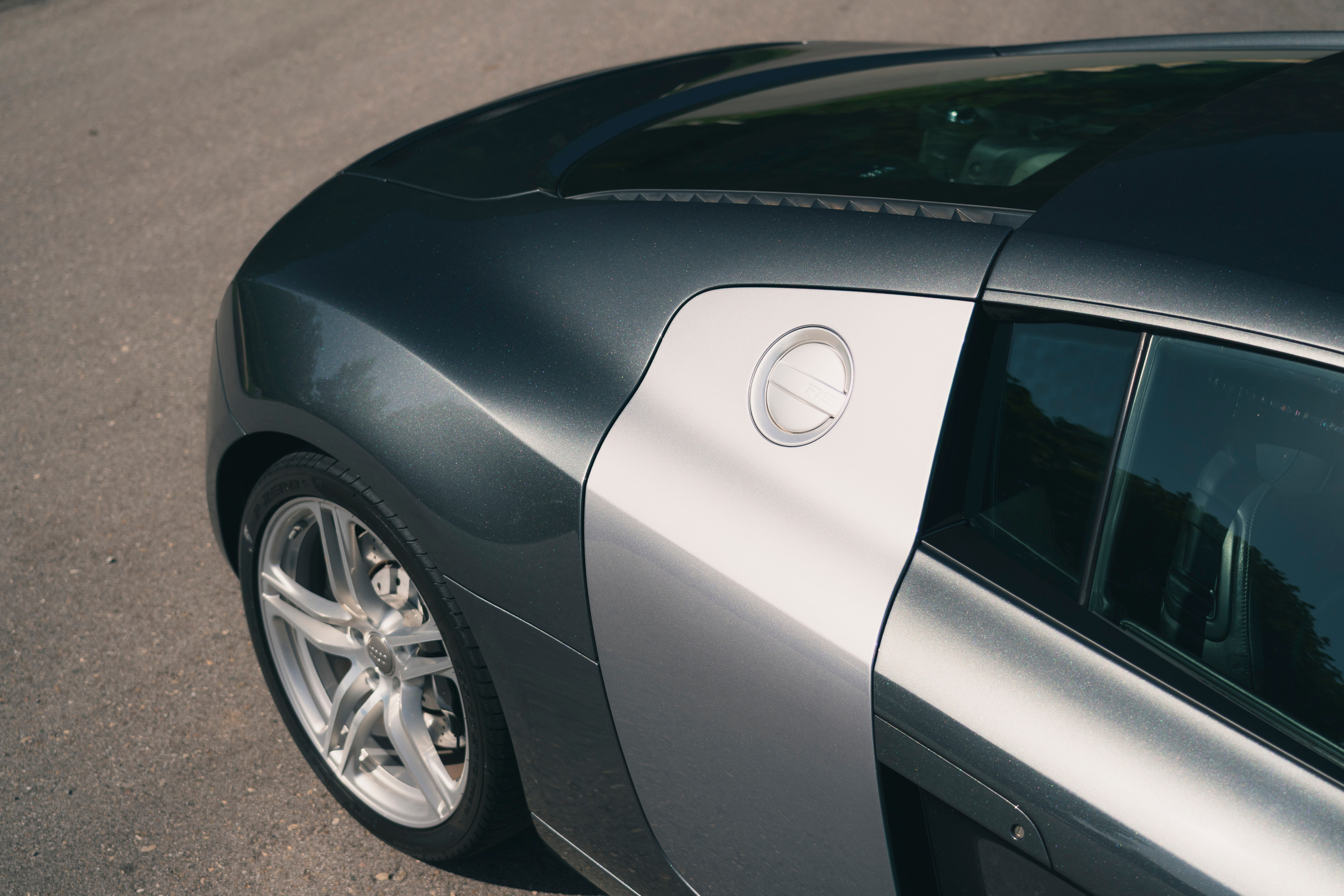
The sideblade on the original Audi R8
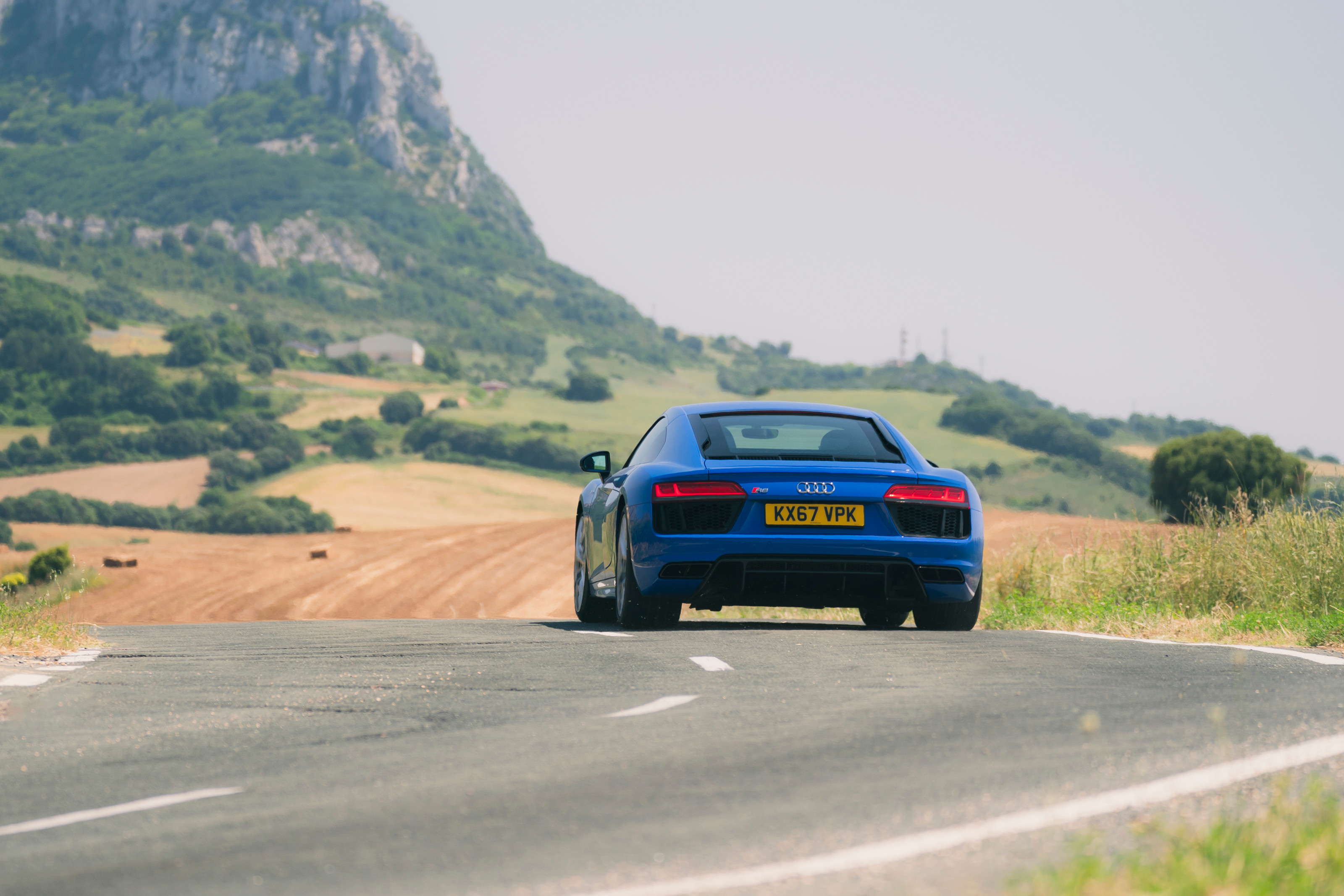
The second generation V10-powered Audi R8
Ergonomics are not the strong suit in Gehry’s hotel. Rooms are awkwardly shaped, the intersection of roof form with the structure feels haphazard and ad-hoc and the hotel is spread out confusingly across multiple levels and locations. And yet it is still an impressive creation, nearly 20 years after completion. It's certainly up there with Gehry’s best buildings.
Combining the Guggenheim's fluidity with the idiosyncratic details of his smaller, more personal works, the hotel clealry gets the love and care it requires. As a leading wine hotel, it’s modestly trafficked by a moneyed, appreciative audience and therefore there’s the funding to keep everything working and finished to the original specification.
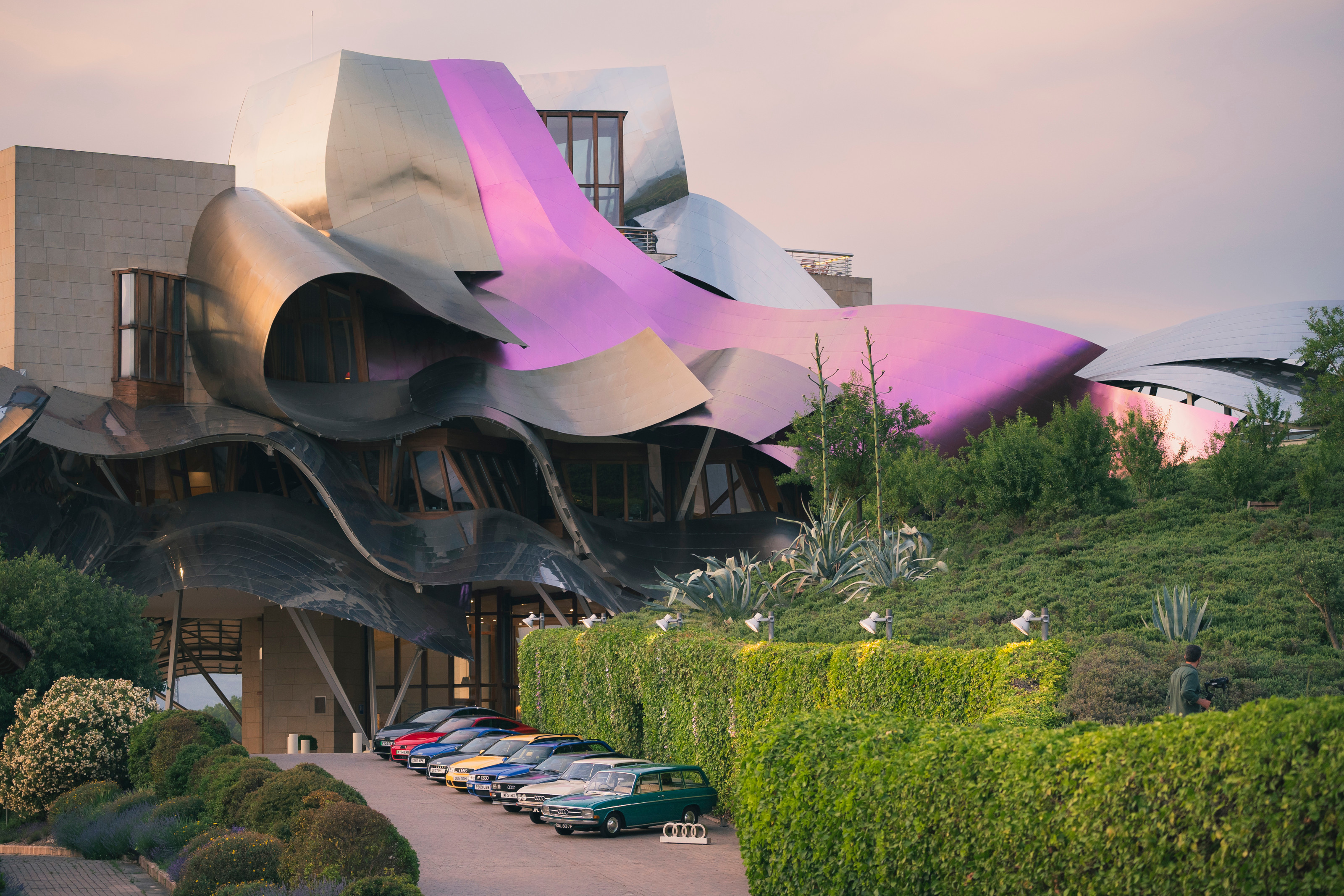
Audi 60 years of design
In many ways, Gehry’s hotel is the polar opposite of an Audi, which is a concentrated accretion of highly worked details, all in the service of greater efficiency and performance. Although there's a superficial parity with the idea of aesthetic evolution, Gehry has the approach of an artist, not an engineer.
Audi’s design and engineering credentials might have been given a substantial fillip by clever marketing, but time has been kind to this array of classics. What will the current range look like from the vantage point of 2055?
Audi.com, Audi.co.uk, @Audi, @AudiUK
Jonathan Bell has written for Wallpaper* magazine since 1999, covering everything from architecture and transport design to books, tech and graphic design. He is now the magazine’s Transport and Technology Editor. Jonathan has written and edited 15 books, including Concept Car Design, 21st Century House, and The New Modern House. He is also the host of Wallpaper’s first podcast.
-
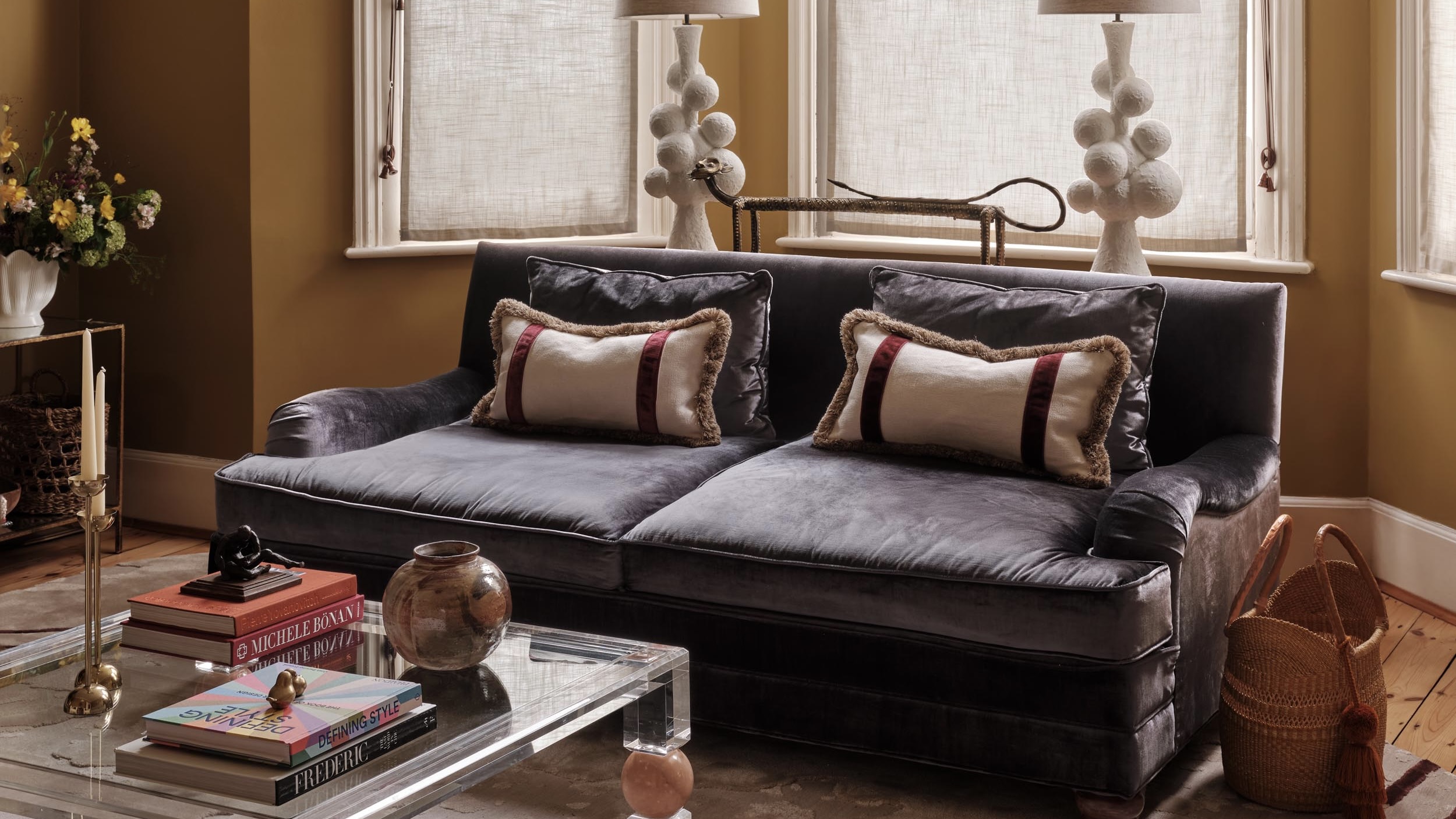 How to elevate a rental with minimal interventions? Charu Gandhi has nailed it with her London home
How to elevate a rental with minimal interventions? Charu Gandhi has nailed it with her London homeFocus on key spaces, work with inherited details, and go big on colour and texture, says Gandhi, an interior designer set on beautifying her tired rental
-
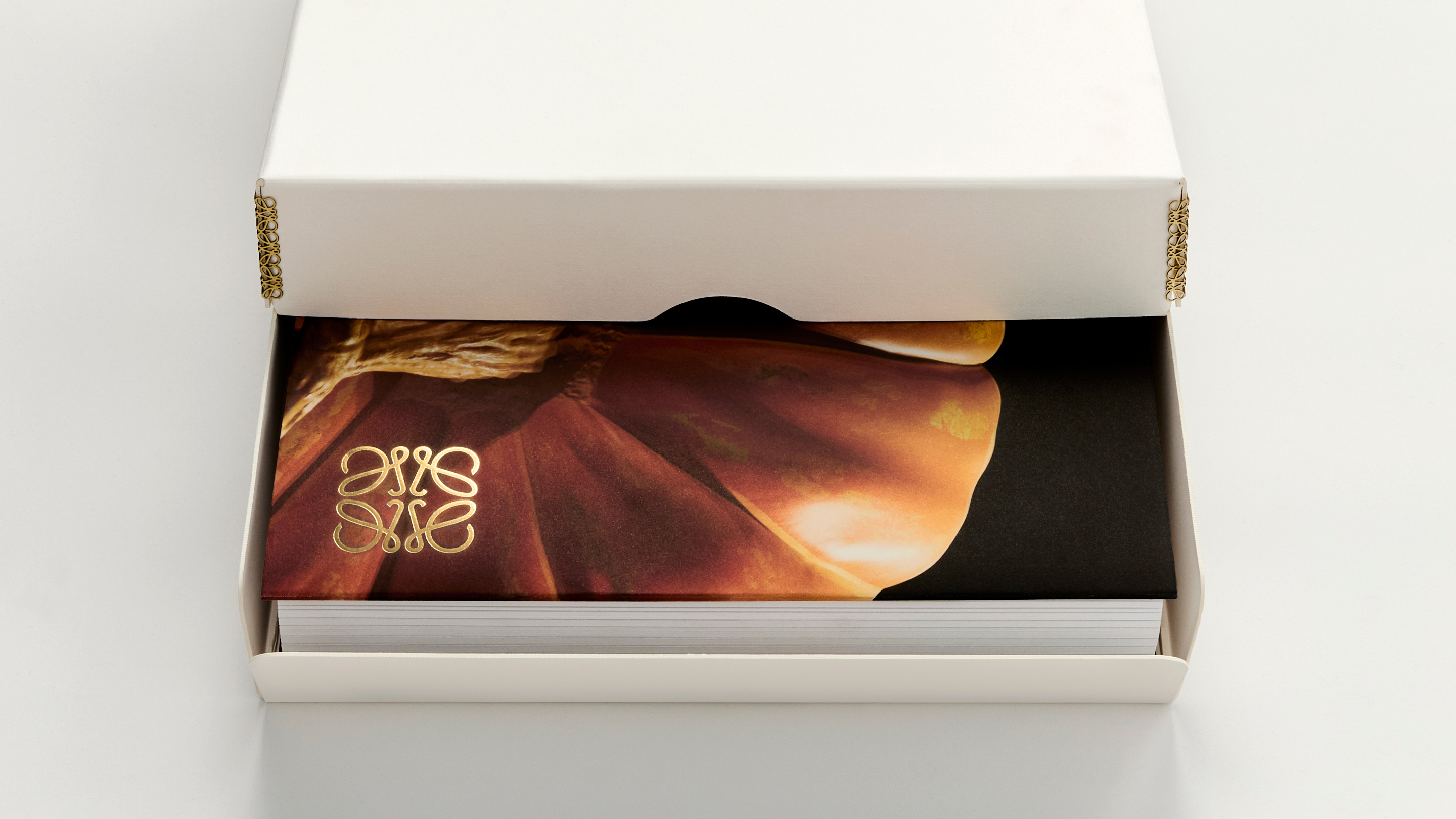 These fashion books, all released in 2025, are the perfect gift for style fans
These fashion books, all released in 2025, are the perfect gift for style fansChosen by the Wallpaper* style editors to inspire, intrigue and delight, these visually enticing tomes for your fashion library span from lush surveys on Loewe and Louis Vuitton to the rebellious style of Rick Owens and Jean Paul Gaultier
-
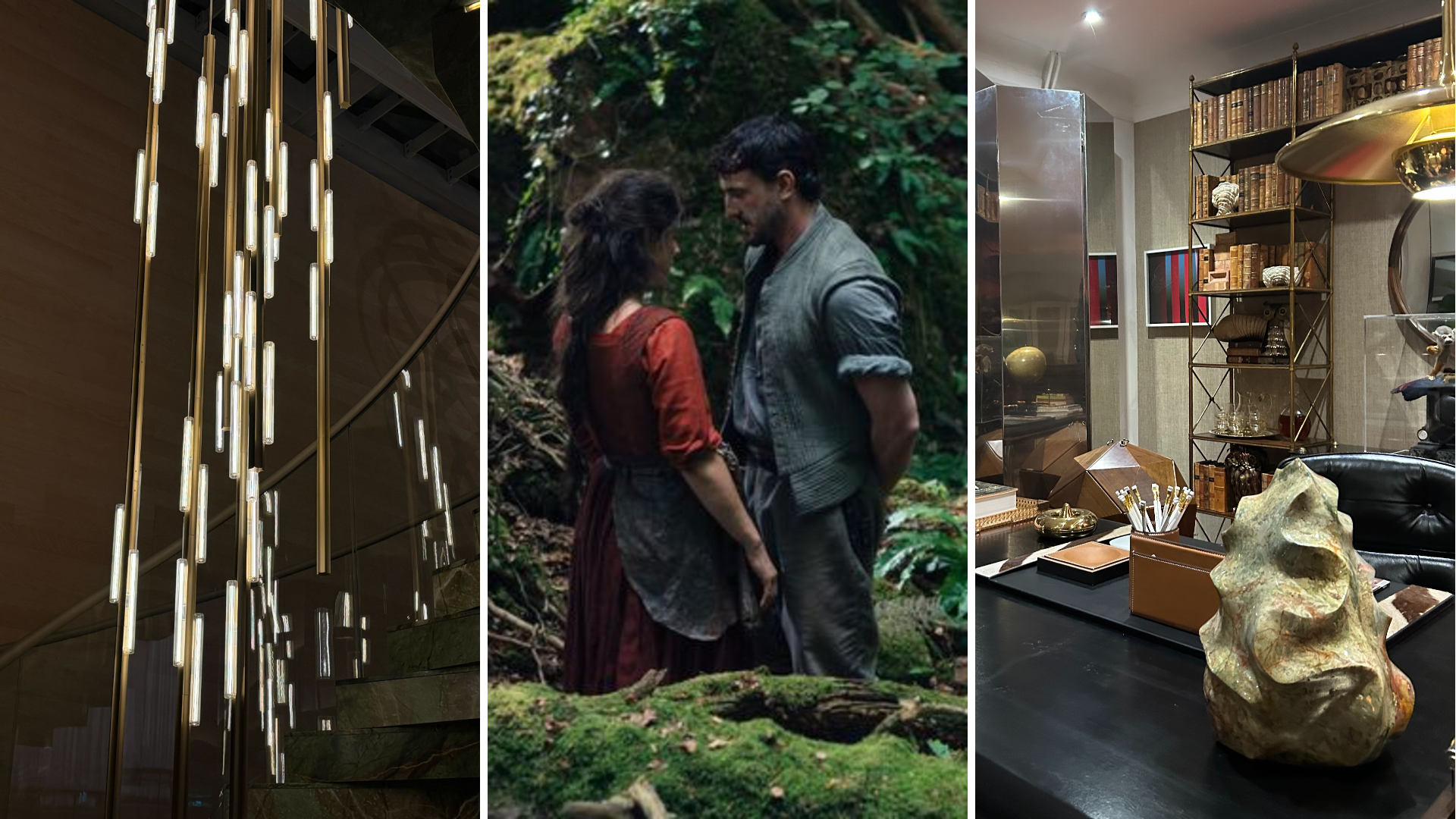 Out of office: The Wallpaper* editors’ picks of the week
Out of office: The Wallpaper* editors’ picks of the weekFar from slowing down for the festive season, the Wallpaper* team is in full swing, hopping from events to openings this week. Sometimes work can feel like play – and we also had time for some festive cocktails and cinematic releases
-
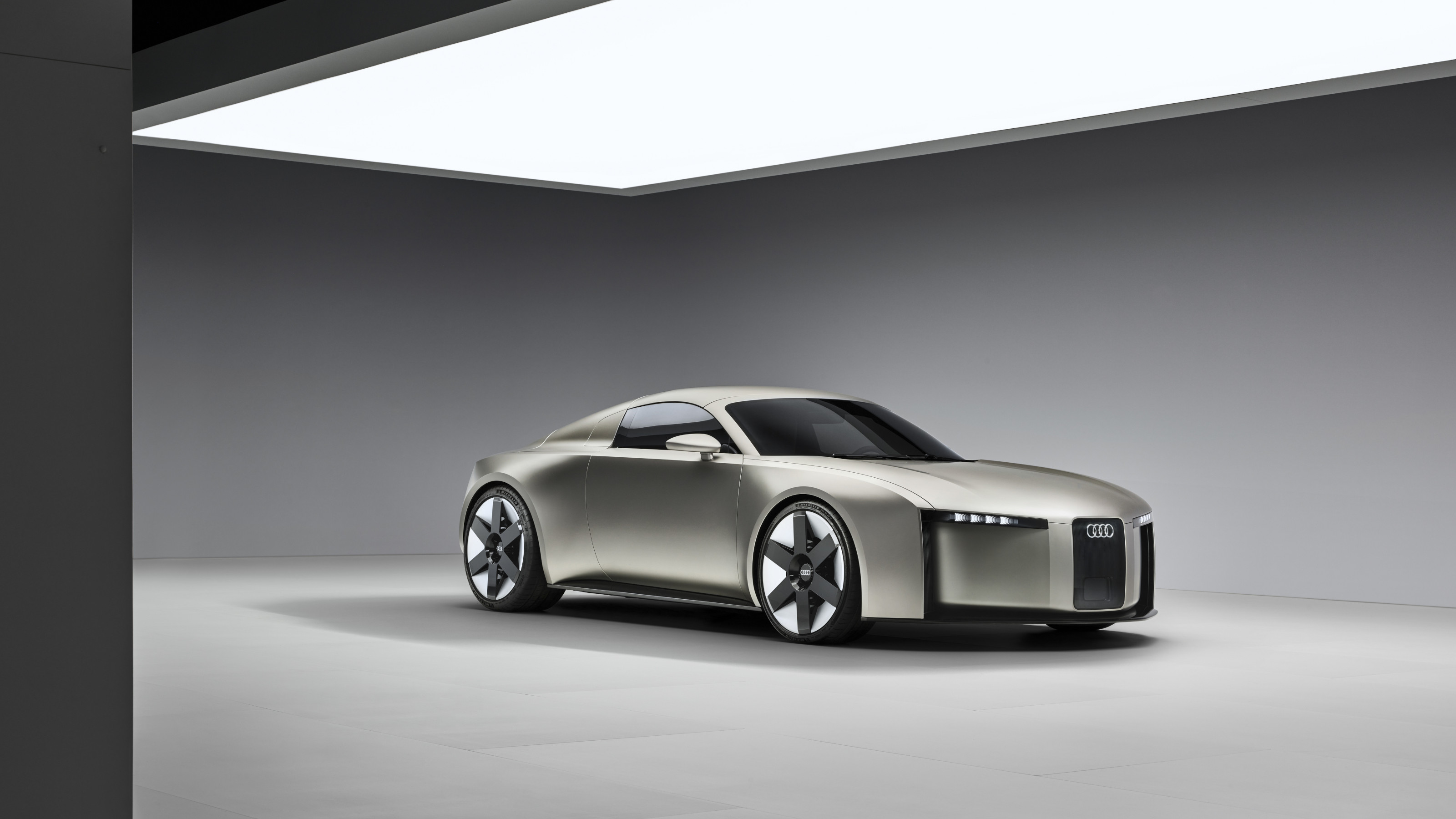 The Audi Concept C strives for clarity, drawing on the past to present a new face for the future
The Audi Concept C strives for clarity, drawing on the past to present a new face for the futureLaunched this month in Milan, the Audi Concept C is a reboot of both design language and visual identity for the German manufacturer
-
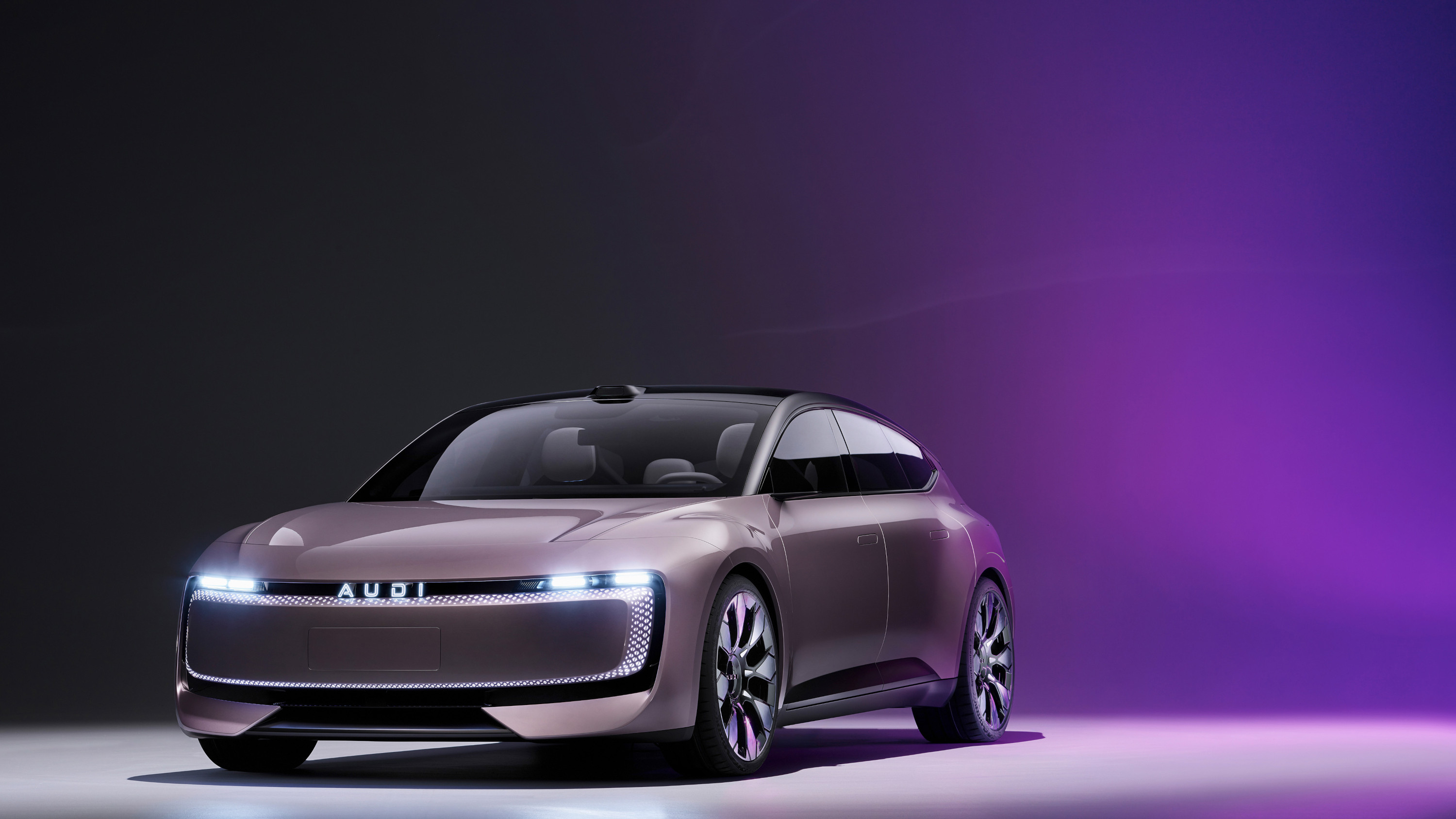 Audi launches AUDI, a China-only sub-brand, with a handsome new EV concept
Audi launches AUDI, a China-only sub-brand, with a handsome new EV conceptThe AUDI E previews a new range of China-specific electric vehicles from the German carmaker’s new local sub-brand
-
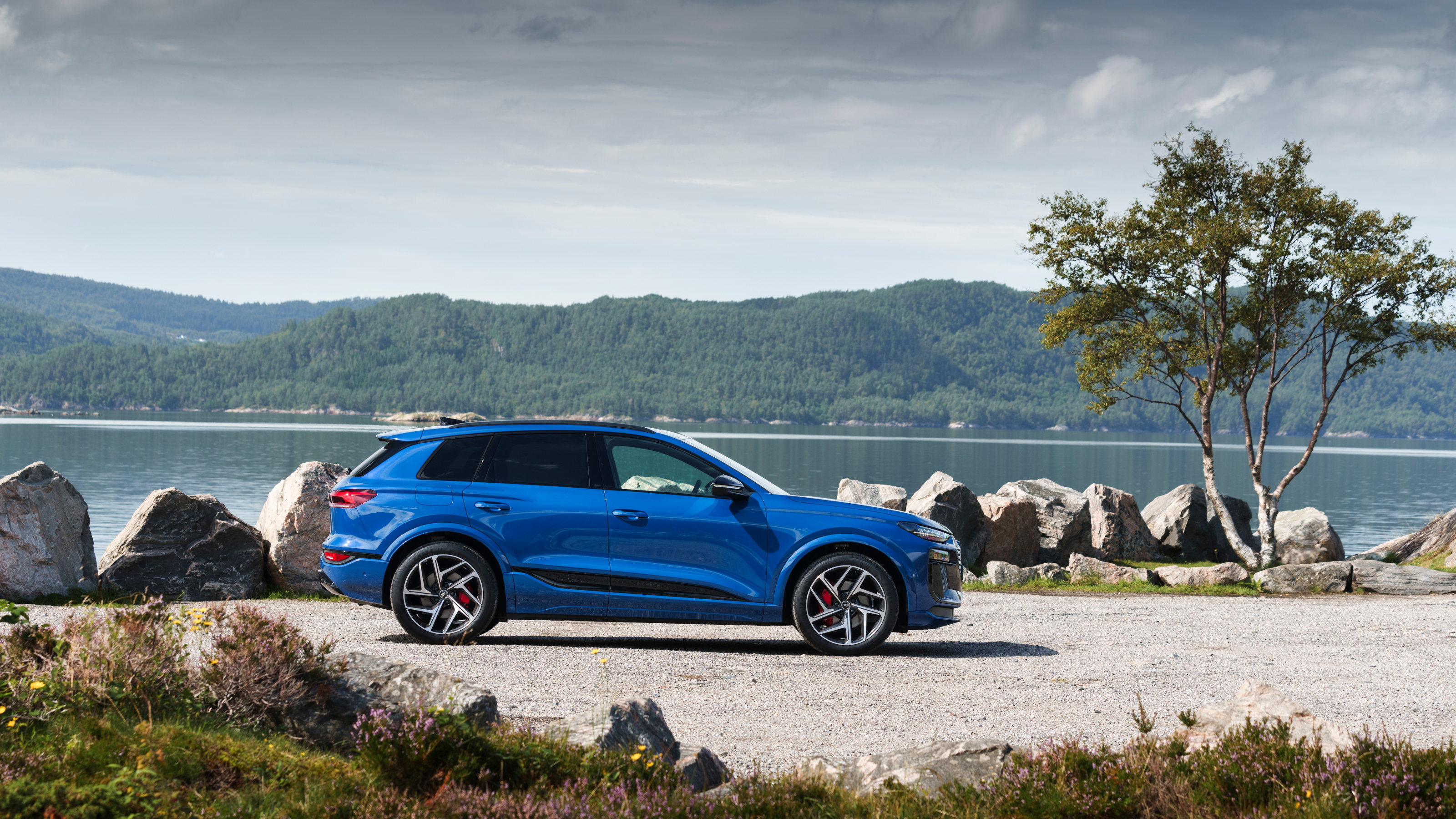 We take Audi’s new Q6 e-tron quattro around and across the fjords of Norway
We take Audi’s new Q6 e-tron quattro around and across the fjords of NorwayThe new Audi Q6 e-tron quattro is a pure EV that marks a new design direction for the German brand, setting new tech standards along the way. Transportation Editor, Jonathan Bell, takes it for a drive
-
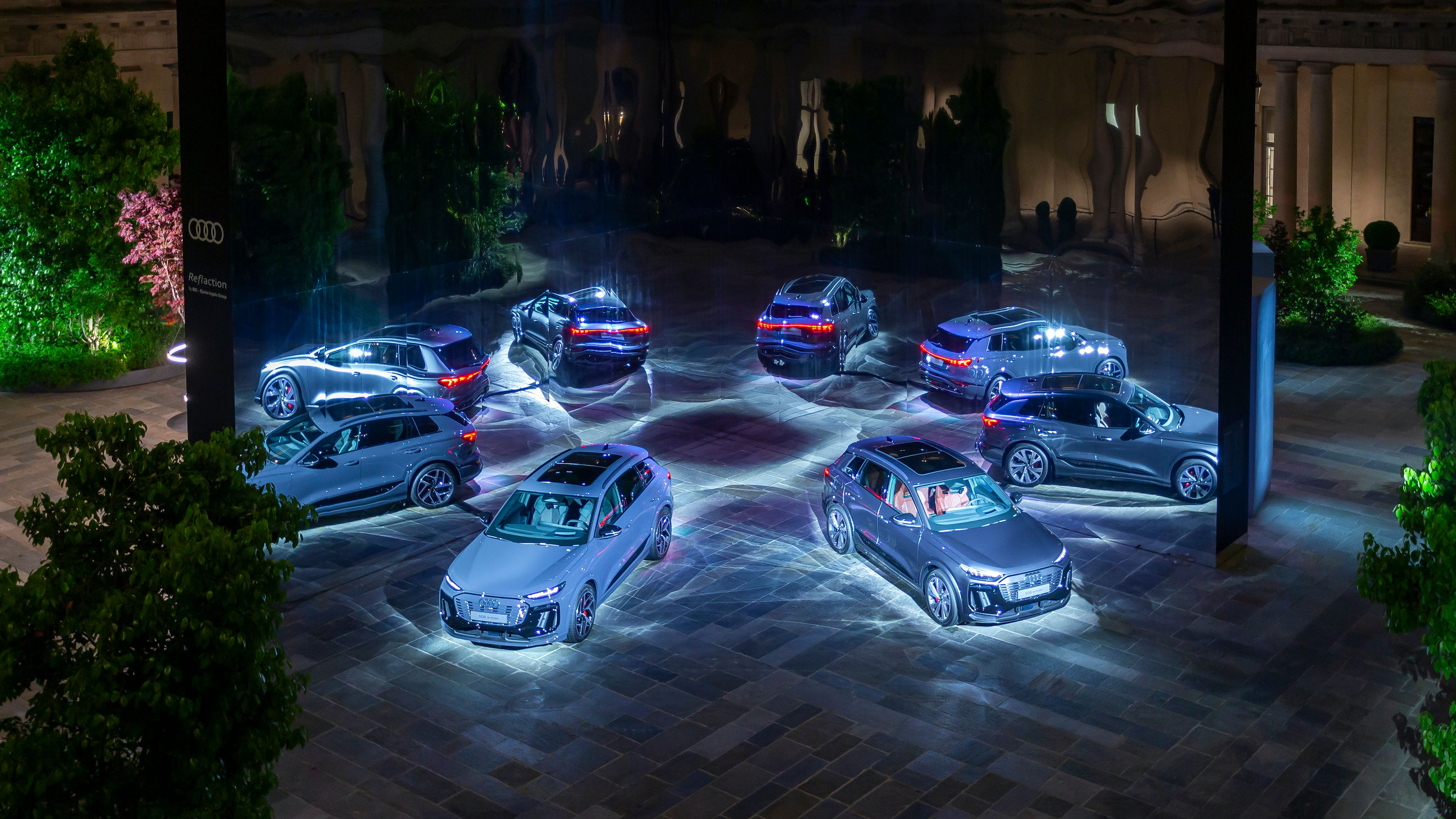 A deep dive into the new Audi Q6 e-tron, revealed at Milan Design Week 2024
A deep dive into the new Audi Q6 e-tron, revealed at Milan Design Week 2024The Audi Q6 e-tron is the brand's latest all-electric car, a stylish powerhouse launched at Audi’s House of Progress in Milan
-
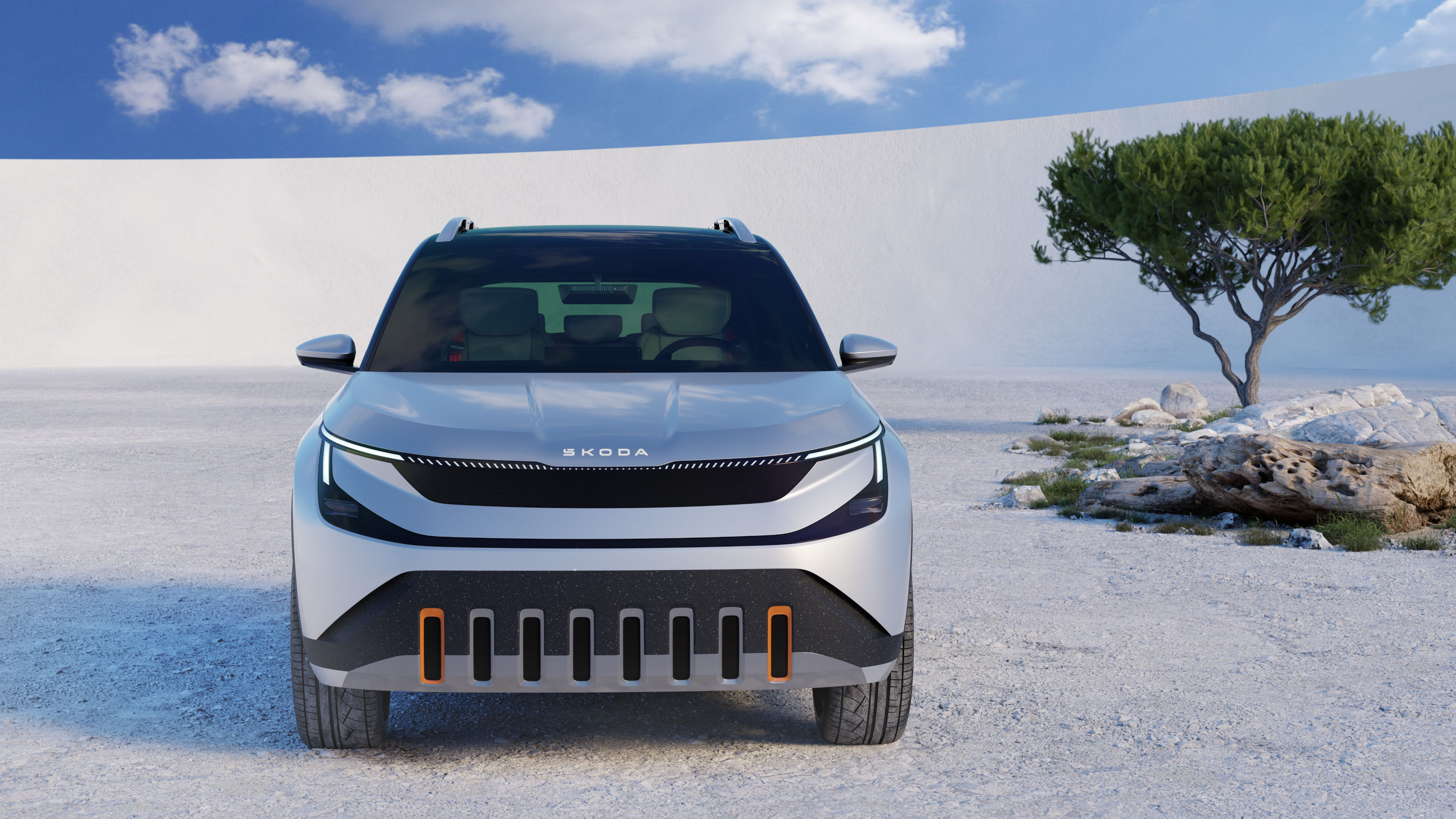 Coming soon: a curated collection of all the new EVs and hybrids that matter
Coming soon: a curated collection of all the new EVs and hybrids that matterWe've rounded up new and updated offerings from Audi, Porsche, Ineos, Mini and more to keep tabs on the shifting sands of the mainstream car market
-
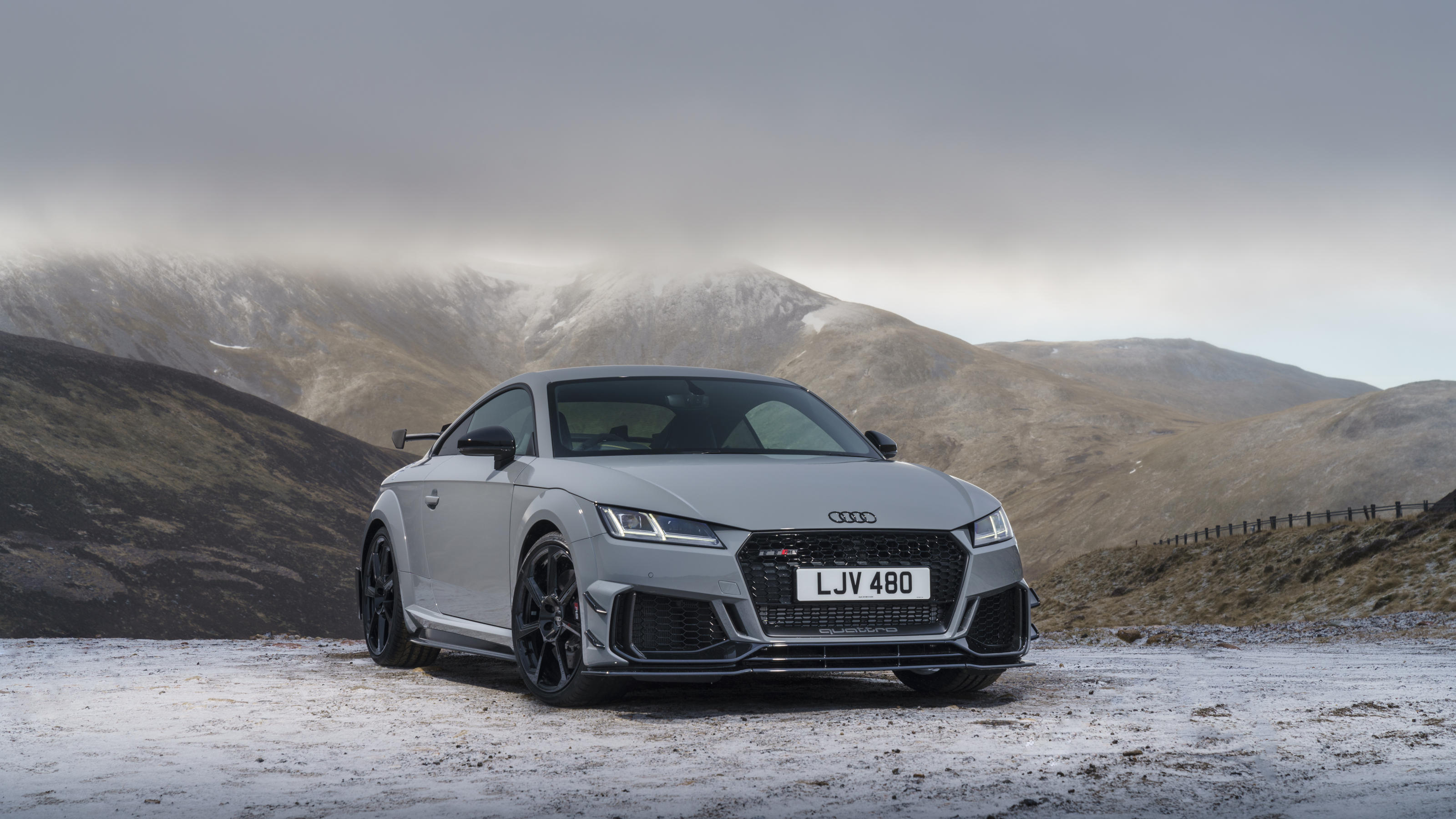 Farewell to the Audi TT, a design icon that evolved with the automotive landscape
Farewell to the Audi TT, a design icon that evolved with the automotive landscapeFor over 25 years, the Audi TT has been synonymous with the brand, a modern machine that initially favoured style over sport. The final editions are very different beasts to the original
-
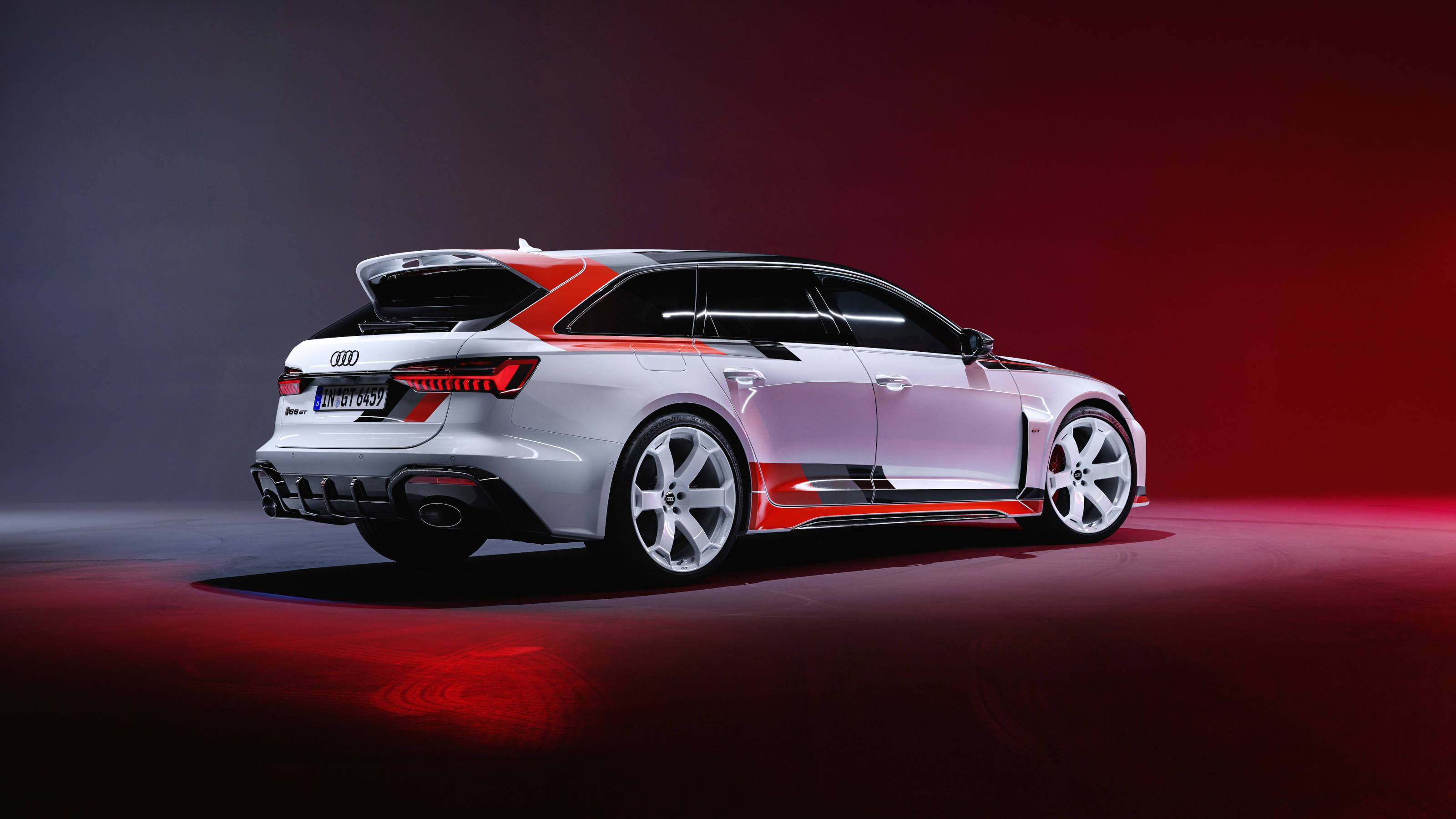 Audi RS6 Avant GT is an estate car that thinks it belongs on the track
Audi RS6 Avant GT is an estate car that thinks it belongs on the trackWith the Audi RS6 Avant GT limited-edition supercar, Audi Sport has gone all-out to create the ultimate hyper-estate
-
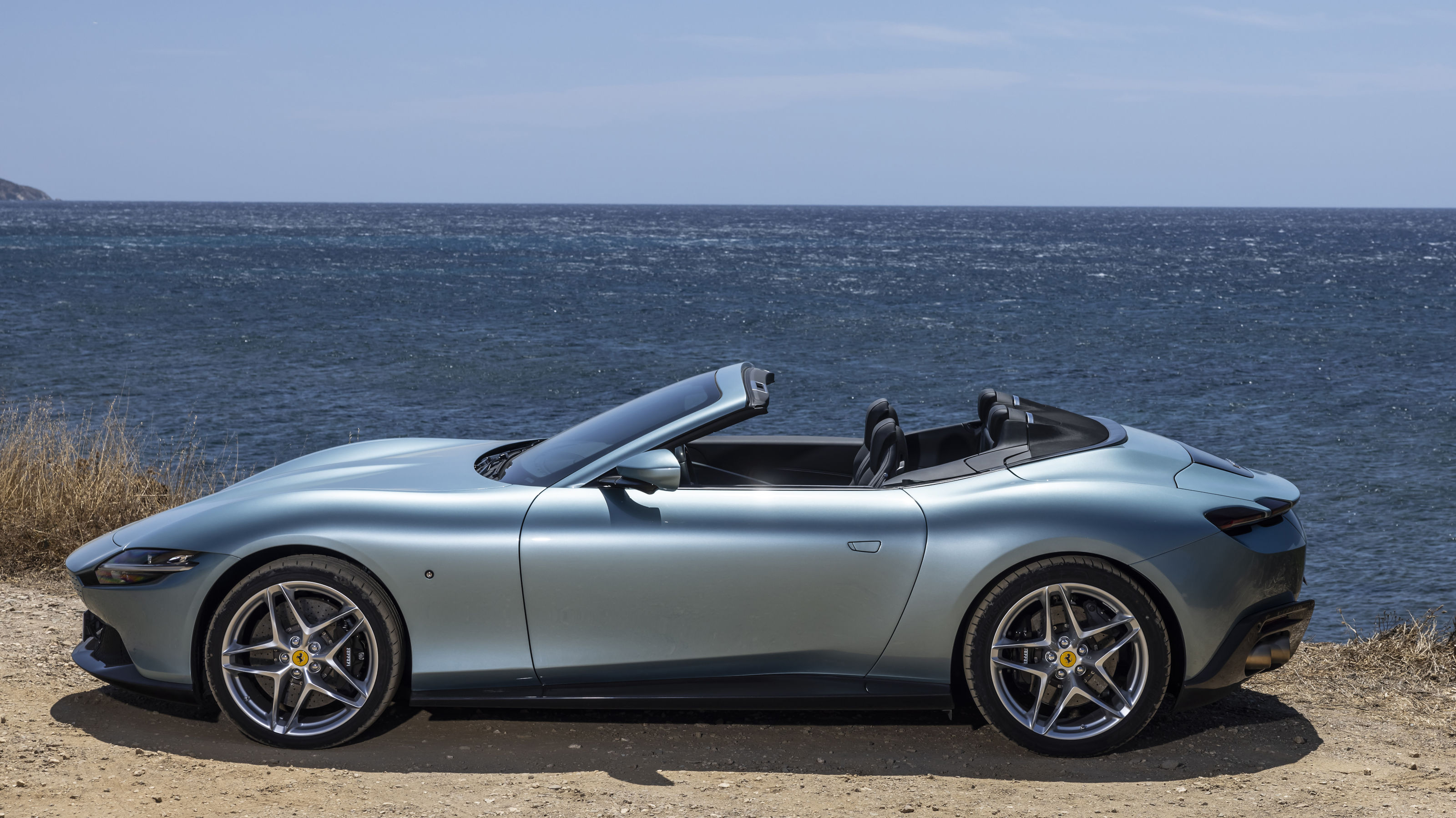 Year in review: the top 10 cars of 2023, as selected by Wallpaper’s Jonathan Bell
Year in review: the top 10 cars of 2023, as selected by Wallpaper’s Jonathan BellWhat were the best four-wheeled offerings of 2023? Transport editor Jonathan Bell takes us through the year’s most intriguing automobiles